
The bulk of our homeschooling years are spent in the elementary phase, and I believe the books and curriculum we choose is critical to our own longevity as homeschoolers.
If we choose curriculum that feels official but sucks the life out of learning, we will not have the stamina or confidence to homeschool into the teen years. However, if we pick living books and read them well, alongside our children, we will be excited to enter the next phase with them, as well.
I remember when my oldest turned 8 in August of 2011. I felt the weight of responsibility sink in even deeper. “Now,” I thought, “things need to get serious. Now it needs to count.”
I wasn’t sure and I’m still not sure, what I meant by the need to ‘count,’ but I felt it again when he hit 5th grade.
Yet, really, each year simply built on the previous and despite my feelings, there was no sudden leap off a cliff or climb up a mountain.
Let’s begin the journey.
Find more: Our Homeschool Curriculum Choices
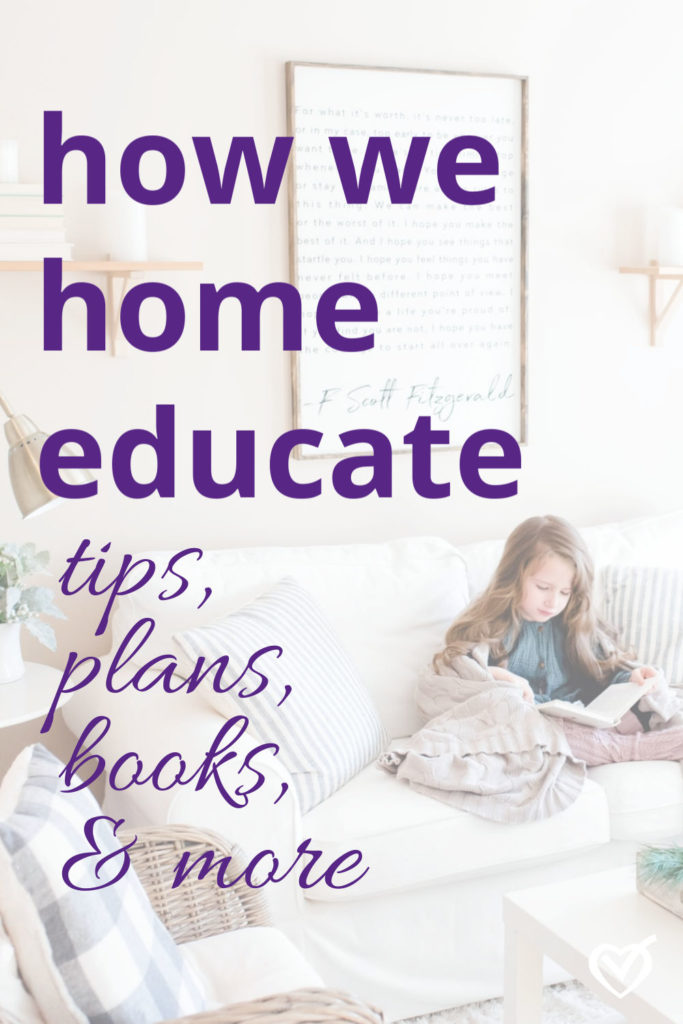
Our Grade-by-Grade, Year-by-Year Homeschool Plans
From second grade through sixth grade I combine my kids as much as I can in lessons and think more about opening doors of interest and laying down foundational skills and habits than I do about curriculum objectives and standards.
It’s always good to remember that grade levels are a modern category without a correlation to reality.
Click on the tab to see each year’s specific plans for my elementary-aged kids.
Fifth Grade Homeschool Curriculum
6th grade and 4th grade are the grades that correspond to my middle children’s ages. I really do wish people would ask for kids’ ages instead of grade.
It would be more accurate, if grades were a thing, to say both of them were 5th grade. And I do my best to plan according to reality. So here are their combined 5th-ish grade homeschool plans.
Math
Both the 11-year-old and 9-year-old are in Math-U-See Delta, learning fractions. They are, in fact, in the same lesson, with much drama and competition ensuing.
However, math is one thing we do not do together, even if they are in the same lesson. They each need to work at their own pace and deal with their own struggles to gain mastery most effectively.
They will also do daily xtramath drills until they pass all levels.
Latin
We finished – by which I mean we’re done, not really completed – Latin for Children Primer A after 2 years of using it. Four students in, when I found myself contemplating giving up Latin, I finally admitted defeat not with Latin, which I’ve enjoyed when using other programs, but with Latin for Children.
I am not a textbook type. Even with the video lessons, LFC was meant for a teacher, and it just didn’t really work for us. Even on my third time through, I felt like I was missing something that would make it click, and my students’ retention and understanding has always been poor.
Instead of giving up Latin, we’re switching programs.
Brandy Vencel has raved about Visual Latin for years, and it seems to fit the bill: more engaging video lessons meant to communicate the entirety of the lesson, plus a few worksheets that don’t teach but simply reinforce with practice the lessons on the video.
We’ll do about a lesson a week, but my plan is simply to master the lessons as we go rather than finish the program this school year. To help us master the material, we’ll use the provided Quizlet practice games and also use Picta Dicta for fun, independent vocabulary practice as well.
Reading
One of my goals is to raise readers. Being a reader is one of the marks of an educated person, so if I’m educating, I’m raising readers who read.
Readers read on their own, when books are not assigned. So I only assign reading when I need to guarantee a particular book is read slowly and carefully, when I see a reading rut developing, or when I see no reading happening by choice. Assigning reading is a tool to help develop a reader, but someone who reads assignments only is not actually a reader.
So, I view assignments as a crutch that is best when not needed.
Here’s what I’m assigning for these kids this year, and why:
- Bible reading challenge – I don’t want to leave Bible reading up to chance. I want to help my kids build the habit of daily Bible reading, so I assign it. We all enjoy doing the Bible reading challenge together.
- Reading time – on their checklist, they have “read 30+ minutes in one of your selected books.” Each term, they’re choosing 2 books off our personal shelves in each of 4 categories: biography, tales (not fluff fiction), history, natural world.
Then I’m helping them build habits of attention and keeping by adding the assignment: Add to your reading journal. This is a personal exercise, and supposed to be fun, but build the habit of keeping that I believe most readers desire, even if they don’t actually do it.
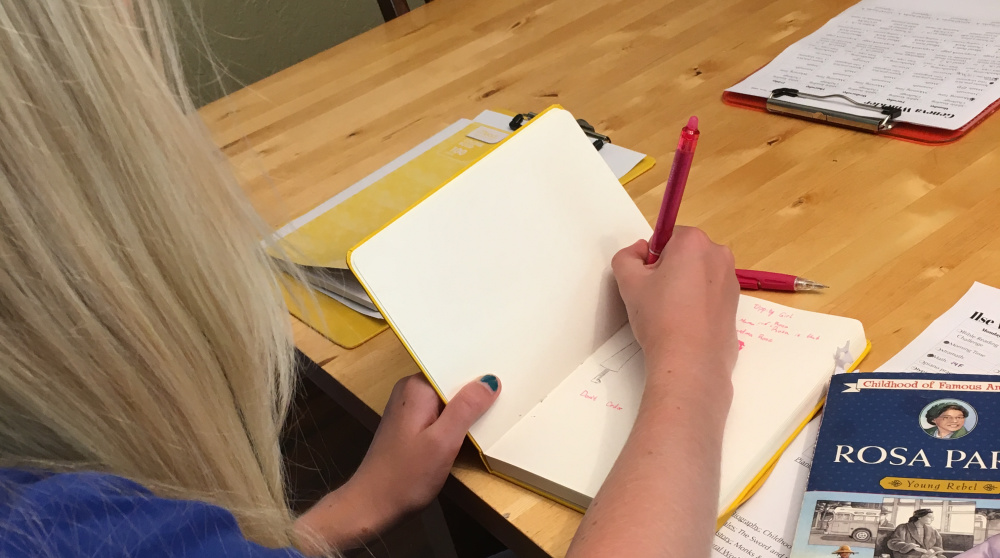
Writing: handwriting, composition, spelling, grammar, and copywork
I do my best to choose activities that count double or triple in the language arts category.
For spelling, handwriting, and copywork, dictation fits the bill: Each Monday I slowly dictate a verse or two from Psalms or Proverbs (click here to copy my master list), then they practice any words they had trouble with. Two days in the week they practice the passage by copying it and by practicing any words individually they think they might miss. On Friday, I dictate the selection again and usually they have the spelling down.
By the end of the year, my goal is to have them taking their dictation in comfortable cursive. At the very least, my son needs to at least learn the habit of putting space between each word.
You learn to do so by correcting the work each time you haven’t done it correctly. Basic, simple, doesn’t require a workbook or complicated process or silly games.
Last year I used Spelling Wisdom, which was good. However, I found that by the end of the week they nearly had the selection memorized, so I wanted to choose selections worth memorizing this year.
These two are also ready to begin composition skills. My daughter has done a little already, but it’s been a gradual, slow start. This year we’ll dig in and review then move forward and get to a 5-paragraph fact-based report in the last couple months of the year. I have my own process for this, based loosely on IEW and refined by over ten years of teaching beginning writing. You can learn more about how I teach writing without a curriculum here. This year we’ll take our writing topics from our current history, science, and geography lessons.
We’ll also use Our Mother Tongue with our writing lessons to practice grammar and punctuation.
We’ll meet as a small class with two other friends once a week and they’ll have both a writing and a grammar assignment to complete.
Mini Co-op Lessons: Theology, History, Science, Geography, Shakespeare, and Art Appreciation.
Twice a week we’ll gather with friends to do the bulk of those subjects that spread a wide feast of knowledge. This is our sixth or seventh year, and it’s 1 1/2-2 hours formatted like another morning time, but this time with specific children only and not the whole family.
This year, through short lessons, we’ll learn about
- History, reading about the Middle Ages with Synge’s Discovery of New Worlds and Awakening of Europe. For fun and a brain-break, we’ll also keep practicing CC’s timeline song and Horrible History’s Kings and Queens of England.
- Science, learning about chemistry by reading The Mystery of the Periodic Table, Exploring the World of Chemistry by Tiner, and several books in the Story of the Elements series. Again, for fun and a transition, we’ll use a song to memorize the periodic table. This is my second time around with this set of plans – I did it with the older set 5 years ago according to my Amazon purchase records.
- Geography, reading Halliburton’s Complete Books of Marvels (another repeat for me, personally) over the next two years, as well as learning our geography vocabulary by journalling through Geography from A to Z.
- Shakespeare, studying 3 plays with my 5-step Shakespeare for kids plan: Henry V, Julius Caesar, and As You Like It.
- Art Appreciation, examining 3 prints each of 5 artists. I’d be in big trouble if I left this out, because the kids love it. I haven’t picked the artists, yet, though.
Piano & other skills
Both students are in weekly piano lessons and have 20 minutes of practice daily on their checklists as well.
Nature study has a smaller place in our plans than before due simply to schedule changes and needs as a family. We’ll do more with browsing and copying from field guides and nature books, more neighborhood and backyard observation, and one planned hike outing per term.
My older daughter is also learning typing skills using Typing Club online and my son is not, to his chagrin. Age should come with some privileges.
Using a checklist is also a skill, and we practice that by using it daily and checking it daily. It’s not a magic bullet. It’s another skill to be taught how to use and then to be accountable to using until it’s habit (like after 5+ years). Need to know what to do? Look at the checklist.
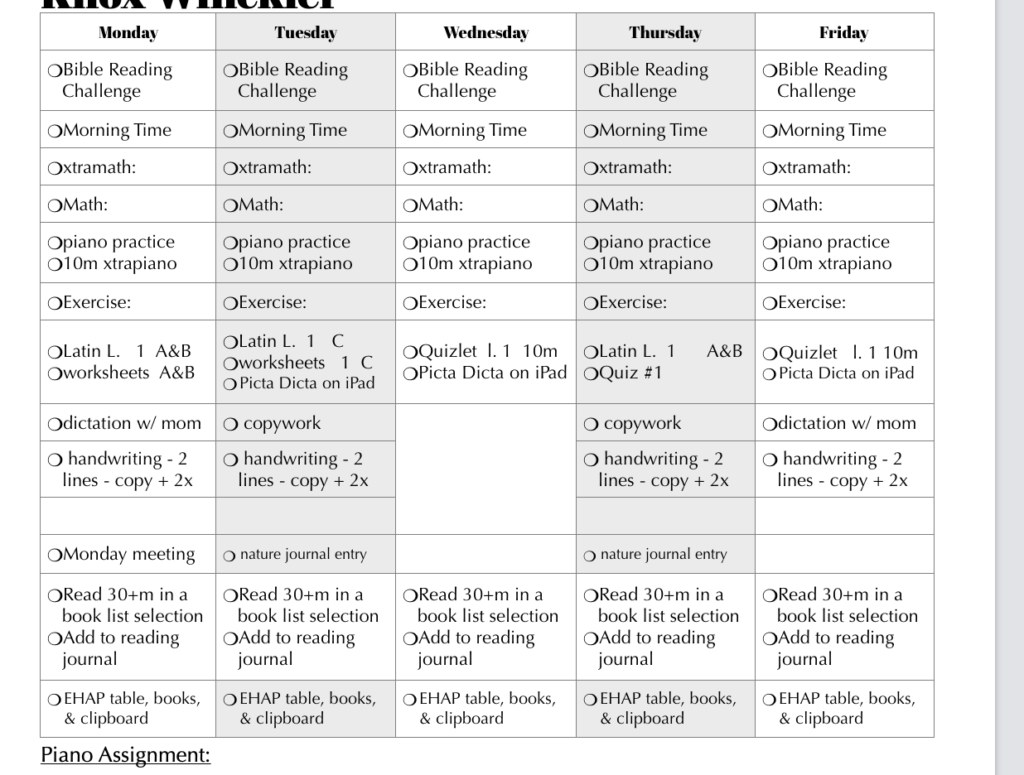
Homeschool curriculum for third & fifth grade
I suppose my two middle kids would be in 3rd grade and 5th grade respectively, but as homeschoolers we know that such labels mean little when it comes to individual students; and it’s individual students we’re planning for and teaching.
These two make a good pair to teach together, like my older two did, during the elementary years. So I’m combining them here in this planning post as well.
Math
Math-U-See all the way! If it’s not broke, don’t fix it. Especially after my husband took over math correcting and helps at lunch break or in the afternoons with math tutoring (always for the older two, who are outstripping me, but sometimes for these two also because he’s good at it), everyone’s math progress has been steady.
They’re both in Delta right now and I have two copies of Epsilon on hand just in case. They’ll also pick back up with xtramath.org for fact drill and my goal is to have them pass both the multiplication and division levels this school year.
Language
I’ll break out what we do during our mini co-op time in another section, but for their own work, we’ll be working on Latin, spelling, and handwriting.
Last year they worked through, mostly independently with the videos, the first half of Latin for Children Primer A. They did great with the vocabulary and enjoyed doing it (usually – one hated the derivative work pages), but needed more teacher-time for the grammar. This year I reserved the time to be more involved with their Latin, because I think they’re both ready for the grammar part now (they weren’t last year).
We’ll do the second half of Latin for Children Primer A, plus some additional conjugating and parsing exercises on pages I created, and twice a week we’ll use Lingua Latina. I had tried Lingua Latina a few years ago with my older boys, and we all enjoyed it but I couldn’t seem to make it work, both in giving it the time and in understanding what I was supposed to do with it. I found an audiobook version for it, though, so now instead of struggling through a butchered attempt at reading it aloud myself, the three of us can sit together on the couch and listen and follow along (I have the Kindle version of the book).
For spelling we’ll continue with Spelling Wisdom from Simply Charlotte Mason. I used this last year with Ilse and this year Knox will join as well. Our routine is one sentence per week, given and studied together on Monday, practiced independently Tuesday through Thursday (by copying, at least once with cursive, and writing out any words chosen as tricky 3 times), and then dictated Friday. If it’s done correctly, they’re done. If it isn’t, they have to do more practice and I choose what words they practice. If it was really bad, we don’t move on and simply use the same sentence again. That seems to be motivation to actually study during the week (most weeks, not all).
During our table time we’ll also do a line or two of cursive practice using either Beautiful Handwriting for Children pages or pages I create with Start Write. Knox has tried to teach himself cursive and he needs some attention – at least he’s motivated and wants to learn!
Geography
Back when my older boys were this age, they did a lot of independent map work, mostly because it seemed productive and valuable, was independent, and I was pregnant and tired. Turns out that it was productive and valuable: they have a good knowledge of the layout of the world (better than mine).
So I’m adding that to the middle set’s independent work. Each week they’ll receive a blank black-line map of a continent and be assigned to color and label it over the course of the week – one continent per week, skipping Australia & Antarctica – will take them through the continents each term (and we have 6 terms). They can look at our world map on the wall, the globe, or an atlas to fill in the maps. Then they will also have the assignment twice per week to draw that continent using the Draw Write Now book 8 directions.
Elementary Lessons Mini Co-op Plans
Pretty much all the rest of their schoolwork happens during our twice a week mini co-op we call “Elementary Lessons.” Three other friends from 2 families join our table – the older kids work on their independent work and the youngest play and are read to at my neighbor’s. It’s a perfect situation for kid-swapping, and it means we can work through our lessons without interruption and with the accountability of having it as an appointment.
Here’s what we’ll study in Elementary Lessons this year:
Grammar – We’ll do 10ish minutes on beginning diagramming, all together on the board.
Bible – We’ll go through an Old Testament survey this year using Covenantal Catechism books 2 & 3.
History – We’re back to ancient history this year on our three-year rotation and will be reading M.B. Synge’s On the Shores of the Great Sea. They’ll narrate aloud after listening, plus we’ll do some illustrations and some adapted Book of Centuries (more like a 2-page-spread of Centuries) and map work.
Science – I collected some more “All About” books and selected 5 for our year: Fishes, Animals and Their Young, The Weather, The Human Body, and The Insect World. These are well-written, interesting and engaging, and geared more for interest than for factual minutia. My goal is that they see and love how interesting all of creation is, and I believe books like these do that better than most science curriculums. We’ll also do nature notebooks and drawn narrations from the reading and from a selection of field guides on the topic we’re reading.
Artist Study – All the students made it clear I needed to keep doing artist study, so we will, although sourcing the prints is always a headache and one I’m procrastinating on. For this year’s artists I chose Bosch, Titian, Raphael, Steen, and Tiepolo. I just paged through an art history book and selected significant artists across the timeline that we hadn’t yet studied. In July I’ll pull up the Wikipedia article on each of them, select 3 pieces from each, save the graphics from art commons, and have 3-4 copies of each printed at Office Depot.
Shakespeare – We’re still following my 5-Step Shakespeare plan and this year our plays are Much Ado about Nothing, Richard III, and King Lear.
We’ll also work on beginning written narration, with variations based on the various levels. For the 3 8-year-olds in the class, I will help them write a complete, clear, descriptive sentence in their notebooks each week that they can copy as homework. For the two 10-year-olds who had some writing instruction this last year, I will assign them to write one paragraph from their choice of that week’s readings. They’ll receive the assignment Thursday, I’ll read and give feedback on Tuesday and if needed they’ll make a revision between Tuesday and Thursday’s classes.
Other Things
Of course they’ll participate in Morning Time, which is a significant piece of their school day. They’re also both in piano lessons and will practice at least 20 minutes per day.
Twice a month or so we’ll meet on a Friday with friends for nature study and nature journalling. If I keep up my motivation and resolve, we’ll also go to the master gardeners’ demonstration garden half a mile from our house on the alternate weeks to observe and draw (maybe even paint).
Both these students need a little more direction in their reading habits. They’re good readers, but don’t have the natural, broad, voracious appetite for books that their older brothers do. So I need to help them broaden their taste, expand their selection, and protect some reading time for them (they’d rather go play). So I’ve blocked off reading time for them and for myself, along with commonplacing/journalling time, 3 times a week. Also, during our Monday Meetings, I’ll help them choose 2-3 books, rotating between history, biography, nature lore, and story. They won’t have to finish in a week, but those will be the books they can choose from during the reserved reading time.
The story selection will mostly come from my friend and neighbor Kirsti, who will be leading a book club for the middle and younger set while I teach the older kids’ lit class on Wednesdays.
Homeschool curriculum for combined second grade and fourth grade
And the cycle rolls ever on. My middle children are smack in the middle of their elementary years while my older two have moved beyond.
The students are the main difference, not the material – they will be doing pretty much what their older brothers did, except more consistently. Years of experience (i.e. practice) and adding more children increases consistency.
We’re continuing our three-year history cycle, continuing Math-U-See, starting Latin for Children with this second round, and counting Morning Time as the most important part of our school day.
That’s the summary, now for specifics.
So, here’s my priority arrangement of their work this year:
- Morning Time
- Math (using Math-U-See)
- Bible reading (self-directed but daily reading)
- Elementary Lessons (history, science, art, etc.)
- Independent but guided reading (1 biography a week)
- Handwriting/Spelling (Spelling Wisdom, StartWrite, & Beautiful Handwriting for Children)
- Nature Study (twice a month group arranged by a friend)
- Latin (Latin for Children)
Is it bad that we’re classical homeschoolers but Latin comes last on the list? No. There’s always next year, when I’m not also learning the ropes with high school. It’s early to start my second grader, but I’d rather keep them together for efficiency’s sake and because they aren’t too far off in their language abilities.
If we only get 1/3 or so through Latin for Children Primer A this year, I’ll be happy. I’d like them to get started, but I don’t expect them to be ready for Primer B next year. So we’ll be pacing Primer A to take 2 years.
Homeschool Plans for the Elementary Students
So, then, here’s my plan for these two kids.
I always start with a few print-outs from Plan Your Year to brainstorm and plot, then I transition to a spreadsheet, because I’m an INTJ and have to set things up my own way.
In a spreadsheet like this I plot out what needs to be done on which days, plus what needs to be prepared ahead of time and checked weekly.
It never really looks like a lot this way. Then once we start and try it out for a week or two, I usually adjust.
The bulk of the elementary students’ teaching time happens twice a week during Elementary Lessons, when we, with friends, read history, science, artist study, Shakespeare, and Bible. This year we’ll do modern history, various science topics with living books & sketching, late Renaissance & early modern artists, 3 Shakespeare plays, and the Gospels. I’ll be posting separately about Elementary Lesson plans.
Elementary Lessons doesn’t begin until the end of August. For our first term, we’ll be solidifying our individual studies: math, handwriting & spelling, and Latin.
When lessons start up, my friend Kirsti will also be starting up book club again – she did it with the older set and now it’s the middle set’s turn. They’ll have book club while I am doing class with the older kids. This will be another in for broadening their enjoyable reading time and tastes.
Both of them have their own Trello homeschool checklist, but I don’t expect them to be independent. It’s still my job to keep on top of their work and prompt them through their day, but instead of keeping track of what they’re supposed to be doing in my head, we have a checklist to reference. My prompt then becomes, “Let’s look at your checklist,” so that they – eventually – learn the habits of working from the checklist themselves (not until 11 or so, though).
Co-op lessons for 9-11 year-olds
Elementary Lessons is the name of our mini co-op that I teach twice weekly at my house with 2 of my kids, 2 of my friend’s kids, and 1 child of another friend. My younger-than-elementary (now only 1 of those!) kids go down the street to my friend Kirsti’s while hers walk over to mine. It’s an ideal set-up, and not entirely unintentional or accidental.
During our twice-weekly 2-hour lesson chunk, we do writing (with only the 9-11 crowd), history (modern), geography, science (various topics), Bible (Gospels), Art Study, and Shakespeare. Short lessons make it possible.
Here’s what we’re using this year, with a peek into my Evernote homeschool plans. I’ve copied these into my public Evernote Homeschool Plans notebook, so if you’d like a closer look, send an email or leave a comment and my assistant, Virginia Lee, will share them with you.
Beginning Writing (30 minutes)
In writing we’ll be learning the parts of speech, parts of a sentence, basic diagramming, and composition IEW-style. I taught IEW for a few years and now just do my own thing, but along the same principles – it’s a loose, laid-back version that emphasizes writing with a clear style rather than over-practicing every possible style. I’ve written more about how I teach writing in my homeschool here.
Materials I’m using:
- Memoria Press’s Grammar Recitation (not the workbooks or program, just the Q&A)
- Aesop’s Fables
- My own styles & openers reference page and banned word list
Class procedure:
- Tuesday: Grammar catechism, grammar practice, learn/practice concept, revise rewritten story (homework: bring a clean, correct copy of the retelling on Thursday)
- Thursday: Grammar catechism, grammar practice, listen to fable, outline (homework: write a retelling from the outline)
History (20 minutes)
Modern history is so hard to find source material for! Of course there’s an abundance of colonial and revolutionary war materials, but once you get to the nineteenth century, the well-written narrative histories for children are scarce. In my ideal world, we’d start with Plymouth/Jamestown and end with September 11, focusing primarily on the US but bringing in enough world history that World War I & II make sense.
Oh, yes, and that in about 24-26 weeks.
So, my ideal is not to be had. It’s time to make due with the resources at my disposal, remembering that this year the age-balance in my class is weighted toward 2nd grade.
Materials I’m using:
- Story of the World vol. 3 & 4 (audio version, but I have the books, too)
- Dover coloring books
- Presidents song and CC modern cycle timeline song (both on YouTube)
Plus, I’m filling in some slots with history picture books – the best place to get well-written narrative history for young elementary students.
- Tattered Sails
- Paul Revere’s Ride
- Seaman’s Journey
- How We Crossed the West
- Gold Fever
- Iron Horses
- Dandelions
- Rosa
- Fireboat
Part of what you see here in this photo is my version of basic “scaffolding” – giving kids a visual prompt and discussion starting point for the day’s reading. They copy the names on the board into their spiral notebook, then they can color while they listen, then we cheater-narrate. No one gives an entire rendition of the reading, but rather we go around the table and each of the six students tells a favorite part. Then I might ask each one to tell me one thing about one of the names, or I might roll the dice to choose one random child to tell me as much as he can about one of the names on the board. No one may opt out or not have a favorite part.
Related:
- Dawn Garrent’s series on scaffolding
- Scholé Sister’s episode 25 on prereading
- Pam Barnhill on procedure charts
Class procedure:
- Presidents/Timeline Song
- Last time’s names/dates/events – 3 quick review statements
- This time’s names/dates/events on board, find & mark location on maps
- Reading (and coloring)
- Dice-roll narrating
- What do you think?
Geography (5-10 minutes)
To complement our modern history studies, I wanted to do a bit of US geography. Because our class is mostly younger students, I knew many of them were not yet familiar with the “lay of the land” in the country, and I thought it’d be worth 5-10 minutes each class to help them get familiar with the states and major landmarks of their own country.
It’s pretty simple. I printed a bunch of outline maps of the US with the regions marked in bolder outlines. They cut out the map, glue it into their notebook (that automatically makes it a fun activity, right?), color the regions different colors, and then class by class, we label the states in one region, then go through and draw in major mountain ranges, rivers, and other significant spots. They don’t have to write out all the state names – they’re labeling inside each state with the postal abbreviation, but during the labeling process, I make sure the states’ names are said multiple times, so it’s part of a conversation, not just a mindless fill-in-the-blank waste of time.
Over the course of the year, we’ll probably be able to do 3-4 maps each.
Science (15 minutes)
Instead of choosing a single topic or a single spine for our science this year, I went with a mash up of topics. I’m a little tired of reading aloud Apologia, having done it two years in a row now, and I wanted to take advantage of some great children’s science books that aren’t necessarily “whole school year” sorts of books.
So we’ll learn about trees and identifying them (including nature journaling, of course) over three terms, about astronomy in one term, and rocks in another.
Materials I’m using:
Class procedure:
- Tuesday:
- Vocab on board
- Reading
- Dice-roll narrating
- Thursday:
- Song
- Who can tell me what we read about last time? Put words on the board
- Drawing with labeling
Bible (15 minute)
I love using Van Dyken’s Covenantal Catechism for Bible. We don’t memorize the Q&A given in the book, but the Bible lessons presented in the curriculum are absolutely superb. They are meaty and weighty, but not above kids’ heads; they don’t condescend and they aren’t trivial, feel-good, or vacuous. They keep a central theme and show how it’s developed across Scripture, pointing to the significance of God’s work from the beginning of Creation until now. It’s a one-piece story, but this program does not present spin-off tales (like Leah being the main point of Jacob’s story, urgh) or sloppy interpretation. This is “The Bible Is about Jesus” reformed, covenantal teaching at its basic, straightforward level, finely done.
This year we’re doing the fourth book on the Gospels. The organizing theme of the lessons is to show how Christ is our perfect prophet, priest, and king as we read through the parallel Gospels. So, as we do the lessons, we’ll also be reviewing the section from the Catechism for Young Children that encapsulate the theme.
Materials I’m using:
Art Study (10 minutes)
Our art study could be better for sure. I know there are all sorts of Right Things I’m not doing.
But, you know what? It’s being done – twice a week.
Know what else? The kids love it and raise a general outcry if I try to skip it.
So it’s a win.
I am doing what I can wrap my mind around doing and pulling off, and then pulling that off.
Feel free to do the same with whatever you’re skipping out of fear or inexperience. A baby step is still a step forward and better than nothing.
Materials I’m using:
- Art videos from Khan Academy on the pieces we’re studying
- Printed art selections (3 prints from 4 artists)
I just chose 4 artists, then researched and picked their top 3 pieces, then downloaded versions from wikipedia, turned them into pdfs and had a few copies printed at a print shop (because we don’t have a color printer). Simple. Last year I used Simply Charlotte Mason’s packages, and those also were helpful and great!
Shakespeare (15 minutes)
Of course, what would group lessons be without Shakespeare?
I’ll be using my own 5-Step Shakespeare for Kids plans, even starting off by reusing the Taming of the Shrew plans – the very first group Shakespeare we did 4 years ago.
This year we’ll read Taming of the Shrew, Macbeth, and Romeo and Juliet. Plus, there’s room in the schedule to prepare for a Spring Shakespeare production. Often a local high school will have a Shakespeare performance in the spring, but we won’t know when or where or what play until at least January or February, so this year I’m budgeting in enough margin to do at least a little with whatever play might be actually performed live, locally, when the school year is nearly over.
Once I find the movie I’ll be showing for Macbeth & Romeo and Juliet, I’ll be posting those lesson plans with the others, too.
Materials I’m using:
- Arkangel audio versions
- Dover print editions
- Printed memory sheets
- various movie versions
Short lessons make it possible
So, twice a week in around 2 hours (1.5 for the younger students), we cover writing, history, science, geography, Bible, art, and Shakespeare. Partly, we can do this because the pre-K interruptors are at my friend’s house and not around needing help while we read, discuss, and draw. Partly, we can do this because we use our time on the “most-bang-for-our-buck” activities, not the “fun” stuff. Partly, we can do this because we – my cohort and I – know our goals and have arranged things to meet our common ends.
Sometimes in the planning stage I get off course, thinking about the Best or Right way things should be done – or, more likely – the way other people are doing it that is better than what I have done. So I bring it up to Kirsti, mother of the other half of the class, who is able to say, in effect, “Hey, our kids like poetry and art and Shakespeare. We just need to keep giving it to them.” Right.
If it’s working for us, if it’s working for you, it doesn’t have to look like the way anyone else is doing it or the way anyone else says it should be done. We can glean ideas from one another, we can spark each other’s imaginations for what’s possible, but at the end of the day, it’s what actually happens in our school days that matters more than what “should” happen according to some nebulous ideal.
First & Third Grade Homeschool Plans
This year I have two elementary students and two middle school students – plus the toddler that I suppose I should start calling a preschooler.
My 8-year-old, Ilse, will be in 3rd grade. She still needs practice reading, so time for that must be reserved. My 6-year-old son, Knox, on the other hand, is currently reading through the Redwall series – he is a fluent reader. According to his age, he’d be 1st grade. According to the level he works at in most areas, he’d be somewhere between 2nd-3rd grade, except for his handwriting.
When I make my plans for these two, I am so glad I homeschool and do not have to choose a grade to put them into. I can work with each of them where they are in each area – assigning them a grade level is only for the purpose of communicating with the outside world. Knox will be reading widely (like a 3rd or 4th grader) while practicing holding his pencil correctly and starting from the top to form his letters (like a Kindergartener). Ilse will practice her reading (like a 2nd grader) while learning cursive (like a 3rd grader0. Both of them are doing well in math; my fear last year was that Knox would catch up with Ilse in that area, also, but Ilse made steady progress and clearly has a preference for the concrete world of numbers.
Typically I would keep school very light for a 6-year-old, and though his table work will be minimal, Knox is bright and needs his mind engaged, so he will be joining our group lessons instead of playing with his younger sister during that time.
So here’s what my plans for them look like this year.
Bible
During our group lessons (called Elementary Lessons at our house), I will use Covenantal Catechism books 2 & 3 (the Old Testament). I’ve been through these books twice with my older two when they were this age, and I’m returning to it with fond memories.
We don’t use it exactly as written (of course). It includes a “catechism” of Bible facts to memorize, which I use only as review questions.
Group lessons are twice a week, so my plan with the program is as follows:
- Tuesday: Start with a review question or two; read (or listen to the audio of) the Bible passage; narrate the passage.
- Thursday: Start with a review question or two; read the lesson; narrate; write or copy a summary sentence (older students – we’re doing this with friends, so I’ll have students aged 6-11 together).
While they listen they will also have a coloring page of the story we’re doing that week. 1 page for both days.
Math
I love Math-U-See! So far it has worked with each of my children. They can hunker down in one concept and keep practicing until they get it or they can plow ahead if they understand. We can go back and pull an old page to review or hold up if we need to, and the video lessons make it easy to go over concepts again if needed or to move ahead without my having to keep a fresh mind for how to teach math.
Ilse ended last year with about 1/3 of Beta left and Knox is about halfway through Alpha. So they’ll each just pick up where they left off and I have the next book ready for them both whenever they get there.
They are both also doing xtramath math fact drill daily, and I have told them that they have to pass the addition level before they can move into the next book. Ilse was pretty close – I should have been having her continue it during our break (and had intended to), but it didn’t happen. That proves that it is the checklists that help us keep things rolling and happening!
History
It’s our Medieval year! Ilse was a part of group lessons last year where we covered ancients, but Knox will hop in en media res. No problem.
So, twice a week during our group lessons (almost like a second morning time, but twice a week and only with the elementary-aged kids around the table), I’ll read aloud from our history spine, someone selected with the roll of a die will narrate, and everyone will have a coloring page to work on while they listen. I’ll read Story of the Middle Ages and The Discovery of New Worlds.
We’ll start off our history time by listening to and singing along with the CC version of the Veritas Timeline cards (CC arranged them chronologically, Veritas’ original order is not chronological).
Science
We’re doing Exploring Creation with Botany this year in group lessons. I’ll read from the book, they’ll narrate, and once a week we’ll add a drawing to our nature notebook. In the past, we’ve done nature drawing outside on our walks or just in our yard and it’s rather tricky. When I heard on a Mason Jar podcast that Cindy had her boys bring something in to the table to draw, I realized that was the logistics hack I needed to make drawing happen more consistently. Since then I have also heard others say they even would look up in a field guide something they had seen and draw it from the guide. That we can manage.
I also found an informal group (with 5 kids 2-3 families is a group) to meet up with for nature study – and scheduling something with other people has been the secret to consistency for me, so I’m excited that this might become a regular part of our routine instead of an occasional addition.
Read – narrate – look – draw. That’s the sum of our elementary science plan for the year.
Geography
During our group lessons we will also do a little geography – about 10ish minutes twice a week. We’ll use the instructions in the 7th & 8th book of the Draw Write Now series to practice drawing the continents and the world, plus we’ll learn about the different types of climates and use blank maps and the model in those books to color where the climates are in the world.
By the end of the year I’d like them to be able to free-hand a rough sketch of the world and color it in according to the climate.
Reading & Writing
For the 8-year-old who still needs reading practice, I’ll listen to her read from a Burgess book for 5-10 minutes. By the end of the year perhaps we will move on to her reading an entire chapter at once and then narrating, but we aren’t there yet – just 2-3 pages at a time for now. I’ll also keep up a rotating library supply of easy readers (Henry & Mudge, Frog & Toad, Little Bear, etc.) and assign her to read at least one story out of them to her 3-year-old sister each day. Fluency comes from lots of reading at or below level, so that assignment will be geared at helping her gain confidence and speed. She’ll also choose one book a week to read on her own and choose one audio book to listen to as well.
We’ll also do spelling. I am giving studied dictation a go with her because I think she’ll enjoy that approach and it sounds promising. I purchased Spelling Wisdom Book 1 from Simply Charlotte Mason and have a 3-day-a-week plan mapped out:
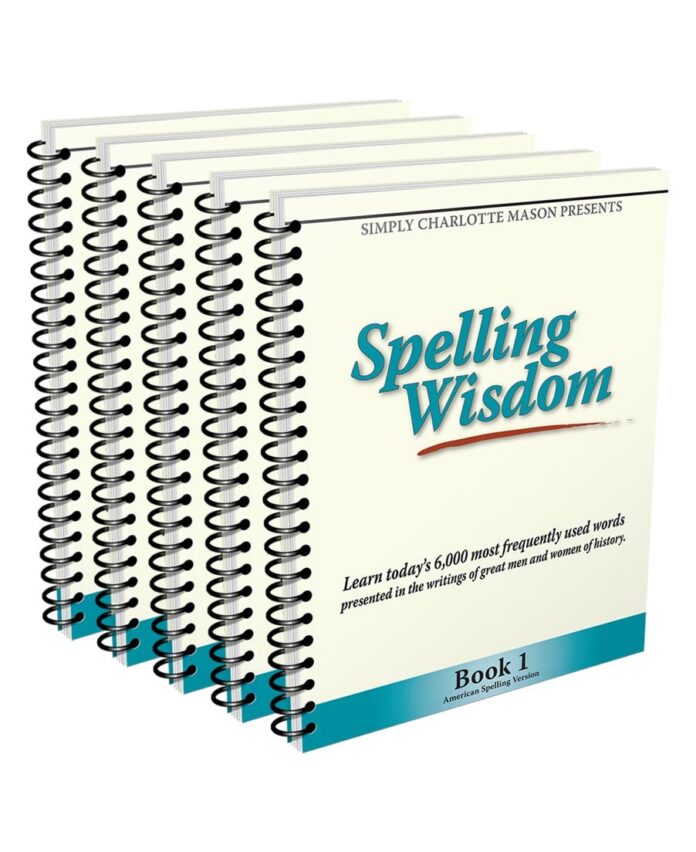
- Every day independently: Ilse looks at the sentence, copies it, and practices any words she thinks she might have a hard time (but she’s making that call).
- Wednesday, with me: Ilse looks at the sentence and copies it. Then we try dictation. She practices any words she has trouble with.
- Friday: We do dictation only. If she gets it right, we’ll do the next sentence the next week and if she still has trouble, we’ll simply use the same sentence again next week.
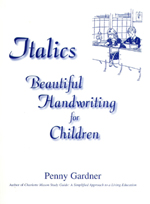
She also wants to learn cursive, so we’ll use Beautiful Handwriting for Children to practice cursive. She’ll start off the year doing spelling in print, but our goal will be doing it in cursive by the end of the year.
Knox will choose two books a week to read and then tell me about on Friday – one story and one non-story. He will learn proper letter formation with me in about 3 minute sessions 3x a week with Beautiful Handwriting for Children (I’ve definitely gotten my $10 out of this pdf!). That’s it for his one-on-one teacher time.
Other
Both Ilse & Knox will begin piano lessons, so they will have daily practice. Reading or listening to the Bible (we have it on audiobook) is also on their daily checklist to build in them the habit of reading their Bible daily.
Of course they will participate in Morning Time, as well. In my mind, math + Morning Time + reading something makes a great school day, everything else is gravy.
What’s in Their Bins
The elementary students don’t have their own shelves or school bins; their things live where it’s most convenient for me to get at when we need them.
Clipboards
Everyone’s clipboards (all 5 kids have them), live in one bin in our open-to-the-kitchen area. Each evening after dinner cleanup, I put each person’s papers for the next day on their clipboard. For my elementary kids, this means
- new math page
- any math pages that still need correction
- copywork page (Spelling Wisdom selection printed for tracing & copying with StartWrite)
- Latin page (either from the workbook or an extra Latin practice page)
I think it’s much easier to assign, track, and correct work when it’s on individual pages on a clipboard instead of in a workbook, so that’s what we do. When they’re done with their work, we have an organizer on the counter where they turn their work in.
Notebooks
Once a week we’ll do dictation, which they’ll write in a spiral notebook which will live in the clipboard bin.
They’ll also have a spiral notebook for Elementary Lessons for copywork, written narrations, sketches, or any other work we do in class.
They each also have a nature journal.
Reading
My middle set of children live a very different life than my older two did at their age. They keep a full social calendar, with neighborhood friends always eager to play. They are almost never bored, which means they haven’t learned the habit of picking up a book to pass the time.
My fourth grader is somewhat picky about what she wants to read, and it takes her quite awhile to finish a book. My second grader reads well, but sticks to Redwall and listening to Tolkien.
So my goal is to broaden them both and carve them out some reading time, making it pleasant rather than a checklist chore. After lunch we’ll have a quiet reading hour, during which time I will also read. My two older introverts loved to turn to a book to be by themselves; my middle two extroverts will appreciate reading company – and I myself need the accountability in turning to books instead of online tasks these days!
I used to have my older two select three books to read per week: one story, one history, and one nature/science. That would overload these two, so I’m going to ask them to each choose one biography to read per week. During our one-on-one meetings on Monday, they’ll tell me about the person they read about the previous week (yes, I know this isn’t adequate or complete narration, but it’s going to be good enough for this reading) and then choose another biography for the coming week. We own lots of biographies already, plus our church library has twenty or more missionary biographies for kids, and if they have any particular interest we’ll browse the library collection. I don’t think there’ll be a shortage of options – but they get to choose.
To help the Monday narration motivation, I will type what they tell me and they can choose to send it to someone they think might be interested: an aunt or uncle, a grandparent, a friend – and we’ll send it by email or text. This is another way I’m using their extroversion in the cause instead of simply trying to ignore it or override it.
Sixth grade curriculum plans
Sixth grade is the beginning of middle school or last year of elementary, and Jaeger’s work will begin increasing in difficulty. A few of his assignments might stretch him, but I think it should also be rewarding – we don’t want just gruel and grind, we want challenge and reward.
He’ll also get a step up in independence, but with plenty of accountability along the way.
Last year we worked on the habit of going straight to the checklist after finishing one thing instead of taking a break or postponing it. Business before pleasure. We do our work before we play.
We’ll continue that pattern and those mottos this year. However, his checklist will be digital and on the computer, so I think he’ll be even more likely to want to “check” his list.
I think it’ll be a great year. I’m getting kinda excited for it.
Bible
Last year Jaeger read and narrated from Starr Meade’s Bible story books for older kids. Those were great. I thought her two books would take him two years, but we were more consistent than ever and he read them both! Next year he will start The Most Important Thing You’ll Ever Study in 7th grade, so what to do this year?
On my shelf I have the Covenantal Catechism series. With the younger kids I will be using the Old Testament books this year. Jaeger has been through those twice already. However, we only used the New Testament books once and that was in a very inconsistent year. So, I selected those for his Bible study this year.
We’ll start with Book 4 and keep Book 5 on hand in case we get that far. On his assignment checklist I’ve broken up the assignments across 2 days:
- Read the passages for Covenantal Catechism lesson x. Read the CC lesson, also.
- Copy the memory verse for CC lesson x. Write a 3-4 sentence answer to the review question of your choice from this lesson.
Plus, Jaeger will also be in our twice-a-week study through the Heidelberg catechism, continuing on from last year.
Math
I ❤ MUS. Jaeger had begun Zeta earlier this year, so he’ll pick that back up and I have Pre-Algebra waiting in the wings in case he needs it.
Latin
Earlier in the year Jaeger started Latin for Children Primer B, so my goal is to have him finish it this year. If he does finish before the year is over, we’ll do more reading and exercises in Latin, but not move on to Primer C until 7th (a full year earlier than his brother! — he benefits from my increased consistency over the years).
Plus, once a week, I’ll sit down and work through Lingua Latina with Hans & Jaeger together as a supplement. I’m not sure how far we’ll get, but I think doing translation work together is where a lot of the benefits from Latin happen.
History
Everyone is in Medieval Times this year. We do history during our twice-a-week group time I call “Elementary Lessons,” and when Hans was in 6th grade he continued with us during those lessons. However, this year the average age around the table during those group lessons will be lower and Jaeger – a history buff already – has read the books himself multiple times in addition to being a part of lessons with these same books 3 years ago.
So rather than use different books during lessons – I want my younger elementary two to get these books – Jaeger will do his own history and not be part of group lessons during the history portion.
He will read H.E. Marshall’s The Story of Europe for his history spine and do a written narration. I’ve assigned him two chapters a week, and one written paragraph per chapter. There are 45 chapters in the book, so he should finish it and then we’ll see how much longer we have. If we need another book to finish out the year, he’ll do written narrations for Famous Men of the Middle Ages. He’s read that book on his own multiple times already, but writing out narrations will be good for him.
Both these books are on his kindle.
Science
Jaeger will join us for our group lesson science, where we will be studying Botany this year. However, to keep his work up to his level rather than letting him slide along with his younger siblings, he will have an additional independent assignment during the week.
During our lesson (i.e. read-aloud) time, I’ll be reading Apologia’s Botany book and we’ll have time reserved for drawing in our nature notebooks while I read. I’ll have the kids bring in bits of plants, depending on what we’re reading about, and they can draw them.
We’re also joining up with friends for more consistent nature walks this year, and we’ll collect some samples during that time as well.
In addition to this, Jaeger will read & draw through Botany in a Day. He’ll skip the first section of the book, which is all about how plants evolved, and dig right into the middle section about how to identify plant families. He’ll copy the illustration and captions into his nature notebook.
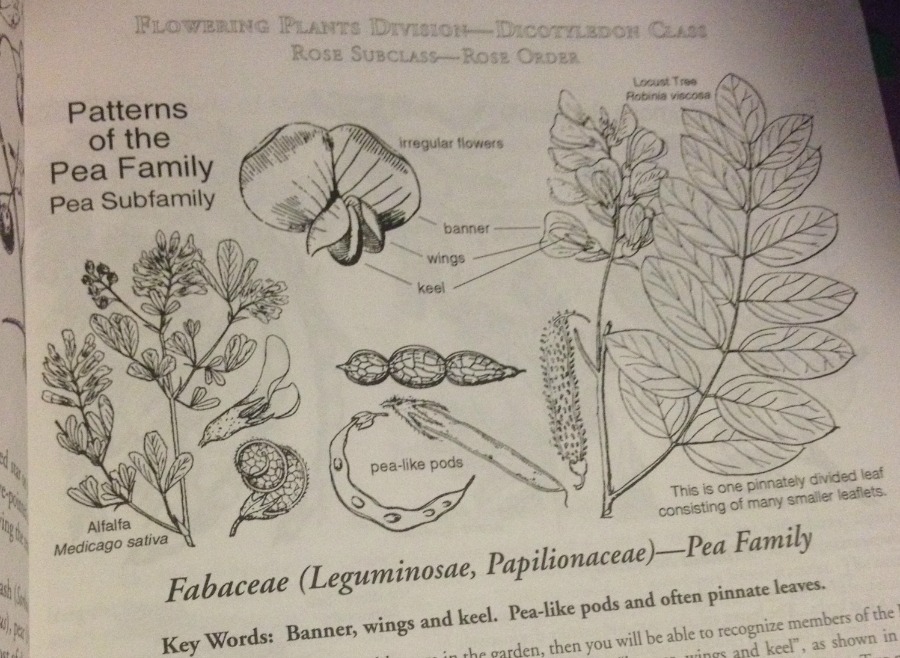
Literature & Writing
This school year I will be teaching a class for literature & writing which both Hans & Jaeger will take part in. We’ll do medieval lit and practice writing on themes or topics pulled from what we’re reading.
I have settled on our books, but not the discussion themes or writing topics yet. That class won’t begin until September, while we’ll begin our independent studies in July, so it’s lower on the planning priority list right now.
We’ll read Beowulf, Sir Gawain & the Green Knight, a paraphrasing of Canterbury Tales, and Fierce Wars & Faithful Loves (a paraphrase of The Faerie Queene). This will be mostly the same group I had last year for logic & poetry & grammar, so I’ll also add in some medieval poetry between books and we’ll diagram together on the board to keep up our skills.
I’ll have the kids keep a commonplace journal, but my goal is to make the atmosphere of the class like a book club. Instead of lecturing, I’ll be leading book discussion and getting them to voice opinions – and then back those opinions up with evidence from the text. It’ll be fun. Middle school kids are great for this sort of thing.
Wide reading and other life pursuits
Every week during our Monday Meeting, I will ask Jaeger to select one book each in the history, natural world, and story categories. He can choose from our shelves or we can find something at the library together.
If he doesn’t finish one of the books in a week, it simply carries over to the next. And I don’t make them finish every single book they start, either. It’s ok to try and then reconsider.
He’ll continue in piano lessons once a week with daily 20-30 minute practice.
Exercise will be on his list, also – he likes to ride his bike or walk around the block with his brother.
Fifth grade homeschool plans
It’s hard to believe I now have a second-born in double-digits.
Jaeger has always worked in advance of his years, simply because he was reading fluently at five and always eager (and quietly competitive) enough to keep up with his older brother.
This will be the first year I have the two older boys doing significantly different work, and it will be interesting to see how the dynamics play out. They’ve always been together, or had the same checklist. But the time has come for them to separate. Jaeger has received much more challenge in his work than Hans, because I’ve done so much meeting in the middle with them over the years. It’s time for Hans to be more challenged and for Jaeger to get some slack and not feel compelled to keep up.
It’s a trick with homeschooling multiple ages: How to best use our time & resources by teaching kids together while still serving each child’s needs. We need to assess each child and each year and try to do our best, compensating one year for the previous year, or stretching in a new direction based on observations and new things we learn. This is part of our responsibility as homeschooling parents.
Math
What I love most about Math-U-See is the mastery approach and Mr. Demme’s foundational principle that children aren’t “behind” or “ahead.” They are where they are and they can only take the next step. Isn’t that the core understanding we must have to teach from rest? What if a math program was based on that very idea?
It’d be Math-U-See: books are consecutive, but not graded. Extra practice can be printed off the website. If a child whips through the lesson with clear understanding and ability the first day he does the lesson, let him do the next one the next day and skip the extra five pages in the workbook.
Did he work all the pages in the workbook this week and he’s still having trouble? Watch the lesson again, keep at it, and print off more practice sheets. Don’t move on until he’s got it nailed.
My current 10-year-old fifth grader is an excellent math student. Sure, long division was rough, and he was at it for more than a month (it might have been two), but he was also doing it a year and a half younger than his older brother had. I love this curriculum that allows each student to work at his own pace while doing its level best to not communicate “behind” or “ahead” to them.
Oh, yes, plus we’ll do daily fact drills just to keep that up. He’s so, so close to passing all the levels of xtramath, and once he passes the division level, he may stop. However, a Calculadder drill page a day is like warm-ups and keeps previous knowledge solid and in use, ready for recall.
Bible
Of course our 2015-2016 Morning Time Plan is focused primarily on Scripture and learning about & worshipping God, so that is the primary religious instruction in our day, but my fifth grader also needs some study with depth.
On his own, he will be reading Starr Meade’s Mighty Acts of God. He’ll read the Scripture listed in a chapter, read the chapter (which retells the Scripture with an emphasis on what it tells us about God), and then during our one-on-one time he’ll narrate it to me and we’ll use one of the end-of-chapter discussion questions to talk about it for a minute or two.
During Elementary Group Lessons, we’ll also be studying the Heidelberg Catechism together, question by question (this will take us two years). But that will require no independent study or homework.
Writing & Grammar
We have done formal, separate writing lessons for the last two years, and this year we’ll simply be putting what he’s learned into practice with written narrations. I’ll assign one paragraph per week, with a topic chosen from our lesson-readings (listed in the Studies section below). He’ll write a draft, do a self-edit, turn it in, we’ll talk about and I’ll mark it up, then he’ll write a final revision.
Each of those steps will happen on a separate day, so one paragraph is a week’s amount of work. It’s important to me that my students (whether they are my children or not), know that no first draft is ever a final draft – all writing can always be and must always be improved upon by a second or third revision. That is simply the process of writing.
Here is the self-edit checklist I created for him:
We will use grammar to discuss his writing when I give him feedback and maybe diagram a sentence for practice while we’re at it to review (we learned diagramming last year). But other than that and Latin, Jaeger gets a break from grammar study this year.
I am also going to try to get him fluent in writing cursive this year, though doing hands-on, at-elbow handwriting for three children a day might just drive me up a wall. Chocolate might be indicated.
Latin
Jaeger is almost finished with Latin for Children Primer A (I feel no need to finish books before we end our school year or start new ones with new school years). He’ll be picking up in Lesson 21 or 22. I have LFC Primer B on hand for him to move into when he finishes.
And, for fun, I bought some extra Latin supplements. At least once a week Jaeger will read some Latin aloud and then orally translate. Latin for Children comes with readers for this purpose, but I bought some extra Latin-reading material so we can switch things up and to perhaps inspire extra-curricular Latin reading also. After all, if the goal of Latin study is to read Latin, we should have some books in Latin to read, don’t you think?
- Amo, Amas, Amat, and More
- Quot Animalia?
- Fabulae Mirabiles (fairy tales in Latin)
- Winnie ille Pu
Literature & Reading
Inspired by Brandy’s Slow Reading, I chose a book for Jaeger to read slowly throughout the whole year, which is a very different pace than he is used to, book devourer that he is.
He will read Pilgrim’s Progress in 2 9-minute (because tracks are each 3 minutes) sections a week. This will make the unabridged book last all year. Yes, I mention tracks, because I have assigned that he listen to the audio book while following along in the hard copy. This will slow him down and prevent him from skimming, and also involve technology which will make the task a privilege rather than a hardship (I hope). Then he will illustrate the section he read in a special hardbound sketch book and incorporate a quote into the page (a baby step into commonplacing). By the end of the year, he will have his own mini illustrated Pilgrim’s Progress. He loves drawing, so he’s excited about this project.
His checklist also includes a section at the bottom we will fill out together on Mondays where he will select a book from the shelf for each of these statements:
- Week’s chosen book on history:
- Week’s chosen book on the natural world:
- Week’s chosen story book:
This is my way of helping him keep his reading well-rounded.
Broad Knowledge
We will continue our Elementary Group Lessons with friends twice a week from September-May, where history, science, geography, art study, Shakespeare, and Plutarch will happen.
In a way, this two-hour, twice-a-week lesson time is more like a second Morning Time than like lessons. I do not teach, really. I read aloud, we talk, we memorize related songs or Shakespeare speeches together. This is really the academic counterpart to our primarily Bible-centered Morning Time. And it works so much better here rather than in the morning because the toddler is napping and the preschooler/kindergartener is outsourced.
The details of these plans will be the next post in this series.
Jaeger will also do nature journalling independently once a week as I wrote about before. Also on his independent work checklist is typing practice (we use Typing Instructor for Kids) and piano practice (my husband gives him lessons).
Organizing his stuff
One thing I want to work on with my 10-year-old this year is keeping track of his books, papers, and assignments. Although he’s had an independent work checklist for years now, I’ve always checked it with him multiple times a day and checked each piece of his work as he’s done it.
He has a hard time keeping track of his stuff, even when I provide clear and easy-to-use homes for each item. So this year at the end of the school day I will be checking his spot for his books and clipboards and making sure everything is where it should be and not left hither and yon.
It’s not been uncommon for his clipboard to be empty on the kitchen counter while his checklist is on the table nearby. Why? Why did it ever leave the clipboard? These are questions that can never be answered.
I’m thinking about a consequences/rewards system like this: If I check and his stuff is not in its place, he has to do an extra putting-away job (for practice!). If I check and his stuff is in its place, then the next day he can cross off a row of his math drill to skip.
He has his own container with colored pencils, a mechanical pencil with extra leads, and an eraser stick. He has his own shelf reserved for his stuff, and putting this away involves no opening or closing or pulling out – just set them on the shelf. Removing as many steps as possible from the putting-away process is an important part of setting kids up for success.
Here is the shelf I have set up for him:
Here is his checklist:
The blank space above each checklist is to write things that are happening each day. On Mondays, we’ll go over his plan for the week, and he will fill in the books he’s reading, choose & copy a motto, and write out any commitments we have that week. It is a beginning step toward learning to manage one’s own time.
I am looking forward to this year with his own personal studies apart from his older brother.
Second grade homeschool plans
My third child is 7 and will turn 8 halfway through the school year. She is a happy, creative, nurturing type.
So far reading has come neither with ease nor difficulty – just slowly. She doesn’t mind her phonics lessons, and she can sound out words and read a little bit, so she is satisfied that she can read. However, she is not reading fluently. When Hans & Jaeger were her age, I could put a stack of books in the living room and they’d simply absorb them. Not so with this one, but that’s ok. She’s not behind and she’s still excited about learning and school.
She likes the structure, the sharpened pencils, the attention. So, I do my best to always keep lessons short enough to move her forward without using up all her goodwill – so far, so good, and my plan for this coming year continues in that vein.
Math
Ilse finished up the year in Math-U-See Alpha with the last addition lesson. Her next math page is lesson 18, which introduces subtraction. Actually, she got to that point sometime in March, but instead of continuing her on, I had her pause in Alpha and do Calculadder addition and xtramath to really solidify her addition facts.
So she’ll pick up with lesson 18 in MUS Alpha and continue to do addition drill pages from Calculadder as well as xtramath. She’s excited to be doing xtramath – it’s on the computer, and it’s something the big boys do. Right now I have her set up with 6 seconds to answer. After she passes that (her score is currently in the 80s), I’ll move her to the standard 3-second level for addition.
Language
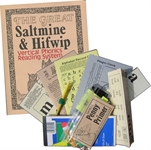
We’ll continue phonics practice with TATRAS phonics – she’s learning phonemes like igh and ough/augh right now. Practicing our sounds and learning new ones will take about 5 minutes, 4 times a weeks.
Most of her reading practice will come by reading aloud, and I picked up a number of the Burgess animal story books for her to practice with. I’m so grateful a friend reminded me of them! The older boys skipped over this level and went straight into Burgess’ Bird Book, but these animal stories are the perfect fit for Ilse’s reading level and temperament – and to her they will feel like official “school” books to read rather than “learn how to read” stories like Poppleton & Mr. Putter.
She has requested that she learn cursive, so after a few weeks of shoring up her letter formation in print, I’ll start her on cursive. I love the italic style because the letter forms are the exact same between print and cursive – you simply learn how to join the letters when you move from print to cursive, but all the letters remain the same shape. We’ll continue using Beautiful Handwriting for Children (I definitely am getting my $10 out of it!).
We’ll also do Sequential Spelling Book 1. She ended last year at Day 12. We usually do 1/2 a day in a sitting, because I think 25 words is too much writing for 7-year-olds (plus the wrong ones which must be immediately rewritten), especially when we do both handwriting and spelling at the same time. Ideally, I suppose, we’d do one, then some reading, then the other, but our pattern is to do reading at the couch and writing at the table, so all the writing gets lumped together.
Spelling is another time we’re solidifying phonics, which is one reason why the phoneme-chanting is only 5 minutes. I’m also reinforcing sounds and phonemes and how they go together during our spelling lesson – it is as much phonics as spelling.
We do the Sequential Spelling on little white boards with dry-erase markers – which makes it even more special and fun. It’s my little nod to being a fun mom. I found the ultra-fine tip markers work well for these purposes – the kids push so hard on them they don’t stay ultra-fine for long, but they still write small enough to look neat on the board rather than fat and blurry.
Bible
Of course our 2015-2016 Morning Time Plan is focused primarily on Scripture and learning about & worshipping God, so that is the primary religious instruction in our day.
In addition to that (and family devotions after dinner), we’ll read a Bible story and a chapter from Leading Little Ones to God during our couch time. This will look familiar to anyone who’s been around for awhile, because it was the plan last year, too. But Knox & Ilse’s couch lessons happened an average of once a week, so we didn’t make it all the way through either book. But they are good books, so we’ll just keep going this year!
Wide knowledge base
Twice a week a friend and I – now that we conveniently live on the same street! – swap kids. I take the big kids and do “Elementary Lessons” and she takes the younger set for “Fun School.” This year Ilse and her cohort graduate up to Elementary Lessons for about 3/4 of the lesson block.
They’ll do geography, science (anatomy), art study and Shakespeare with us. Most importantly, they’ll get a coloring page while they listen to me read aloud, which appears to be her perceived point of Elementary Lessons.
She will also do nature journalling independently once a week as I wrote about before.
Enrichment
Ilse begged for Latin this year, so I went ahead and procured Song School Latin for her. “Take advantage of their excitement” is my motto. I’m hoping Knox will be able to play the card game with her.
She is so excited to have her own Latin. It’s very cute. As is the monkey.
Another thing she’s sure she wants to do is play piano – who doesn’t want to add extra noise to school day mornings? Sigh.
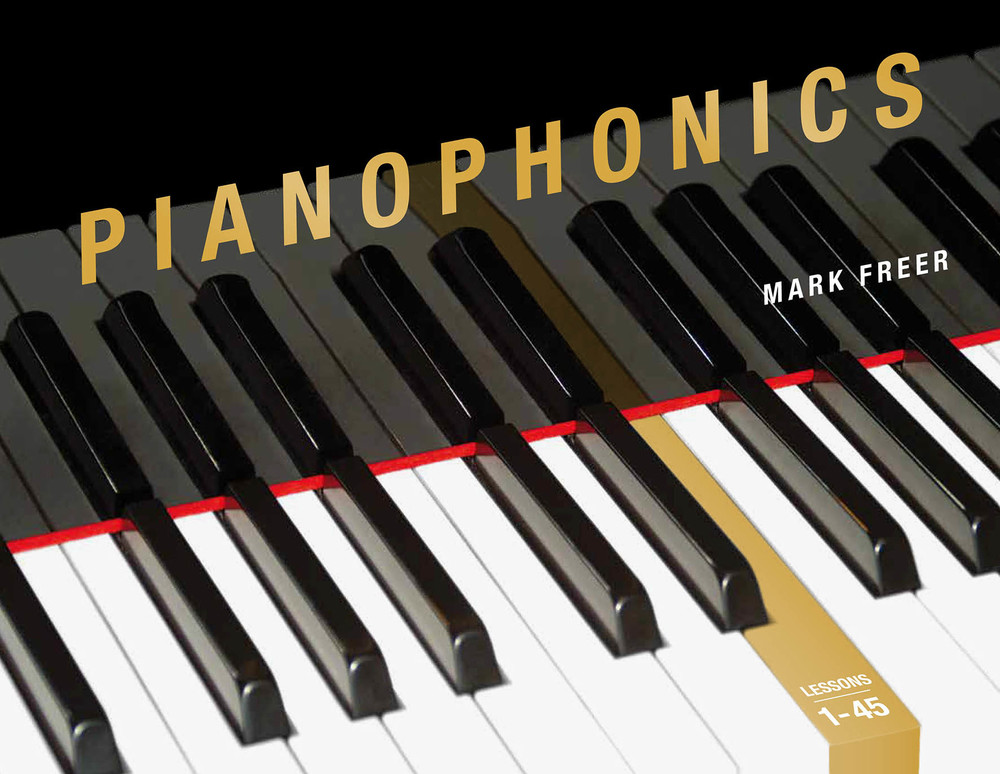
I’ll get her started in a low-key way with Pianophonics, which is what I keep saying I will use to learn to play piano myself, though I’ve never made it past the second lesson.
Organizing her stuff
For the most part, she still does not keep her own things. My bin will have our K-2 stuff, the math bin has our math books and supplies, the Latin will live on the shelf, and our nature journal stuff will remain in our ready-to-grab-and-go nature walk bag.
She will have her own container with crayons and a mechanical pencil, and her own clipboard with a checklist, because everyone loves a checklist.
Here is her checklist:
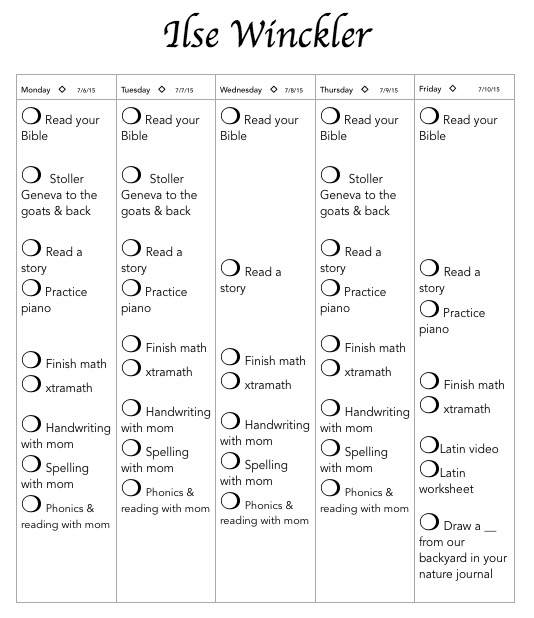
I love the years where they are so thrilled with all things “official” and schoolish. My primary goal during Ilse’s second grade year is to maintain and foster her enthusiasm for and wonder in the world and learning.
Homeschool Co-op Plans
This will be the third year that my good friend & neighbor (what a blessing that she’s both!) will swap kids twice a week after lunch so that each group can get the sort of activity they should have: for middle kids, learning in community; for little kids, open-ended pretend play (and picture books, too). Both groups enjoy not being interrupted by the other.
So, lessons for the elementary-level kids are at my house, and here’s what I’ll be doing:
Geography (20 minutes)
Our geography portion will have two phases: mapwork & read-aloud.
For the mapwork, on Tuesdays we’ll listen to Geography Songs while pointing to the countries on the map. We’ll begin each time with the continents & oceans song, then move into one of these segments:
- North America (including Central)
- Asia & Europe
- Africa
- South America
- US States
So we’ll go through all the countries about once a term. On the sixth week, I’ll hand out a blank map (or two, depending on the students) and see what they can fill in off the top of their head.
On Thursdays, we’ll use the instructions for “map blobbing” in Draw Write Now: Book 7 and learn to draw a rough map of the world with the continents & oceans labeled.
Both class days we’ll also read one chapter from Halliburton’s Complete Book of Marvels. I’m working on building a lesson-plan list with a link to images for each chapter, so we can see a current picture of what he’s writing about (he wrote in the 1930s) as well as the one included in the book (and Brandy tells me some of the features he writes about were destroyed in WWII).
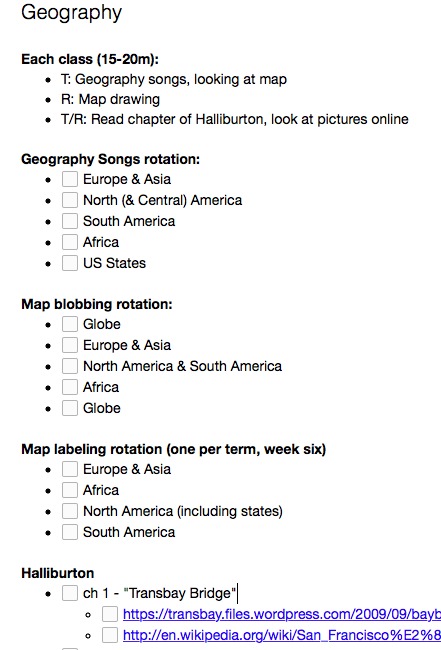
- Geography Songs
- Black Line Maps
- Learning to draw the world with Draw Write Now Book 7
- The Complete Book of Marvels by Richard Halliburton
- online photos of the places and structures mentioned
Science – Anatomy (20 minutes)
Our science study for this year is anatomy & physiology, using Apologia’s Exploring Creation with Human Anatomy and Physiology. In addition to reading short sections and narrating, some class sessions will be spent copying illustrations or labeling bones – but we will not be using the Notebook Journal that goes with the curriculum. As far as my use goes, it’s just a book to read, not a curriculum package.
- Exploring Creation with Human Anatomy and Physiology
- My First Human Body Coloring Book
- Human Anatomy Coloring Book
Our class period will end with a related memory song. I found three on YouTube that I thought would be decent to learn and we’ll rotate through them on a loop schedule:
Here’s my Evernote lesson plan for this lesson segment:
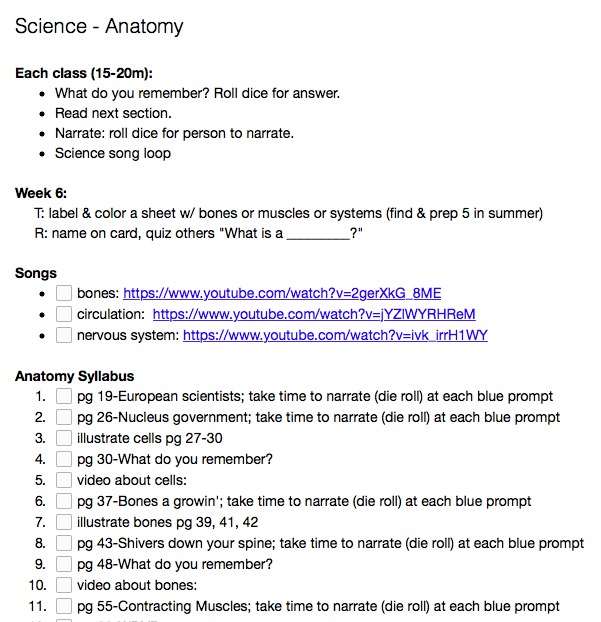
Shakespeare or Plutarch (20 minutes)
This year we’ll alternate terms doing a Shakespeare play or Plutarch life.
For Shakespeare this year I’ve chosen
- The Tempest
- Julius Caesar
- Much Ado about Nothing
I still have movies to preview, but these are some of the resources I’ve already picked up for these plays (if you don’t see anything, make sure images are enabled):
After we do each play, I’ll post the 5 Steps plan with the resources we used (I still need to do those posts for last year’s two plays!).
Because we’re doing ancient history this year, it seemed like a natural point at which to incorporate some of Ambleside Online’s Plutarch studies.
I think we’ll only do the first 2, but I picked three, just in case and also because I couldn’t help myself.
- Publicola
- Solon
- Marcus Cato
Thankfully, the AO guides are open-and-go (and free – not even a book purchase required!) and already broken up into 12 pieces (and we meet twice a week with 6-week terms) so a section a class will work perfectly.
History (Ancient) (20 minutes)
Last year I read aloud 5 books for history and for science – each! Fewer subjects but longer readings turned into dull ears and little retention. So this year we’re doing more subjects in our two hours, but taking all year to go through only one (or 1 1/2 in the case of history) book (over the course of the year, it’s actually fewer books). It’s the Ambleside approach, but with my own book selections and plan. I’m going to hold Brandy personally responsible if it isn’t amazingly wonderful, because she’s the one who talked me into it. Ha!
So to learn about ancient history this year, I’ll be reading aloud Christine Miller’s The Story of the Ancient World and the second two-thirds of M.B. Synge’s On the Shores of the Great Sea. The Story of the Ancient World starts with Creation and ends with Israel’s exile & return, weaving the Old Testament narratives into the context of the nations around them. On the Shores of the Great Sea begins with Abraham and ends with Christ, so we will pick up in this one where the first one left off and get an overview of the Greeks & Romans.
Our history class period will consist of
- A quick “What happened last time?” conversation to bring attention to bear on the subject at hand
- Read the next 4-5 pages (kids are coloring ancient history coloring pages while they listen)
- Roll the dice to see who narrates it OR do an ANI chart about a statement I make from the reading.
Theology (20 minutes)
This is “Bible” on my initial plan, but the truth is that this section is theology. We’ll be using the Heidelberg Catechism to get an overview of doctrine. The Heidelberg, I believe, is a great structure to use to dip into theology, because it is a less abstract and more personal summary than other systematics – it focuses on how doctrines affect us and why they matter to us.
The Heidelberg is broken up into 52 sections called “Lord’s Days” because they are meant to be read and expounded or meditated on one section per week in the church service. Rather than do two per week, I am heeding Brandy’s “Go slowly!” advice and doing only one per week. So we will two years to go through the Heidelberg.
My plan for this portion is
- We all read aloud together the Q&A from last week as well as this week
- Tuesday I read the corresponding chapter in The Good News We Almost Forgot and Thursday I read the corresponding chapter in Williamson’s study guide.
- We do a “sword drill” style look up and reading of 1-2 passages listed in the proof texts.
- We discuss a question from the book or I field a question from them if there’s time.
On the sixth week of each term, we’ll reserve the entire block for questions and discussion. I might even have them try their hand at composing true/false questions to quiz each other with.
A note on the schedule
If you were counting, you will see that if each of these sections does take 20 minutes, there is still 20 minutes to spare in our 2 hour time slot. That’s good. Real life requires margin to be built in if we don’t want to operate in the maxed-out, stressed-out zone (in which zone no learning happens). Between shuffling from one thing to another, to allowing them to get up and stretch (actually, I’m considering making them do jumping jacks) between subjects, to sending off the seven-year-olds partway through, to calling up the seventh grader for segments – it’s not like I’m foreseeing the extra twenty minutes being used for deep, engaged discussion.
Now, I would like to do Ambleside-like Art Study with them also, and I will make and post the plans for that another day, but I’m guessing we need that twenty minute margin built in, and I should wait to see if my planned segments take more or less than twenty minutes before I add in another thing. So we’ll start with the above and see how the flow goes for a couple weeks. My temptation at this stage of the game is always to assume I can fit in more, but it’d be best to wait and see how long these things actually take with real live children rather than my theoretical ideals.
After all, it’s about their learning, not my plans.
Fourth grade and sixth grade combined homeschool curriculum
I can hardly believe this is Hans’ 7th year of “official” homeschooling since the time he started reading at 5. Though they do have more work than their younger siblings, none of it is onerous and they still should be able to do it and have plenty of free time every day for their own pursuits and hobbies if they don’t dawdle.
My two older students this year would be 6th & 4th grade, though grade levels apply not at all in the way we do things.
Independent Work
So while I am working with the middle set (where is the baby-toddler going to be during this time? Getting into people’s business and making messes, I’m sure. I’m going to attempt to interest her in a single-toy-in-the-pack-n-play time. That worked for my other daughter, but not at all for my third son. We’ll muddle and get on.), the two older boys will start their checklists. This year, their independent work consists of
- piano practice
- xtramath.org drill
- finish math page if necessary
- exercise (I’ll put options up on the board like pushups or running around the block)
- read Bible (this is self-directed; they pick what they read)
- writing homework (what to do each day will be on their list)
- fill in a blank continent map with country names (once per week, each continent once per term – on the day they have map work, they don’t have penmanship and they are allowed to look up it up, but they have to do it on their own)
Then after our one-on-one time (explained below), they also have “EHAP your stuff” on their list. They aren’t done until their stuff is put away.
One-on-One Tutoring Time
After teaching the 6yo & 4yo, I will attempt to get them to play with and occupy the baby-toddler. That very well could be asking for trouble; we’ll see. Then I’ll take a quick break – use the bathroom, move around (go outside for a minute or two if it’s nice), drink ice water, and even have a square of chocolate if I need it. Then I’ll correct the boys’ math pages and call Jaeger for his tutoring time. After his, I’ll come up for air for a few minutes and then plunge back in with Hans.
On the agenda for tutoring time is
- go over math mistakes
- 2 lines of cursive practice (I have to watch at their elbow or they don’t form their letters correctly or well)
- sometimes writing tutoring
- Latin work
For this all to happen before lunch, each boy is limited to 30 minutes. We’ll tackle the above list in order and however much time is left after math and the less-frequent writing help will be used in Latin work. I augment Latin For Children with extra writing & translation, and this year want to start more reading.
These students are not done for the day until their math is 100%, and they may have to do another draft on their writing if needed. So, after their tutoring time, they may or may not be done, depending on how well they worked.
At the boys’ request, we will also reinstitute “Monday Meetings” during their Monday tutoring time. Because some of the daily agenda & pep talk stuff will move to the agenda segment of Circle Time, going over the week’s plans won’t take so long and can be added in.
During our Monday Meeting time, I will
- give them their weekly school checklist
- have them pick a book or two they intend to read that week and write it on their list
- tell them an improvement I saw in some aspect of their work the week before
- suggest an area to focus on improving this week
- have them write their own improvement goal for the week (playing a piano scale perfectly, doing math without complaining, etc. – but the choice is their own)
It only seems right, then to also have a “Friday Follow-up” during their tutoring time where I will
- look over their list and get it ready for filing
- ask them what the hardest part of the week was
- ask them what the best part of the week was
Basically, I want to impart some of my own learning and implementing of organization principles and habits to them from the beginning (because why not?). We’ll see how it goes.
Elementary Lessons
For content areas this year we will be “co-oping” again with our friend-neighbors who live about a block away. We both have 5 kids who get along exceedingly well and who are all similar ages. Twice a week my friend will take the middle set (the 6-year-olds and 4-year-olds) while the youngest ones nap and her older two (10 & 8) join us at our house. She reads picture books for an hour to the younger ones (she’s a saint; I’ve never been able to manage that myself!) and then they get free, open-ended play without the older ones interfering.
And with the younger ones not even in the house (and the baby napping), we do Bible, history, science, and sometimes artist study or literature. This year we’ll be studying the New Testament & Acts, the modern period (Reformation to now, so definitely a brief survey!), the periodic table and elements, and Shakespeare.
Last year our lesson time consisted mostly of me reading aloud (I have never read aloud so much ever before), and some written or oral narration (I still wasn’t good about that). This year I toyed with the idea of simply assigning all the history reading, but I realized that if I did that, I would – no matter how much I resolved otherwise – not keep up. And my own knowledge of modern history is pretty weak, so if I want to learn it myself (and I do), then we’ll learn it together by my reading aloud. The kids usually color while listening and that puts my Dover coloring book collection to good use. However, this year I want to take better advantage of having four kids all hearing and learning the same thing. I’m not good at getting narrations out of them and they aren’t that good at narrating (my own fault), but they love to quiz each other. So I have a couple quiz-like games to do regularly where they do the question-making as well as the answering. I will facilitate and correct and make it happen, but they will be reviewing and narrating in a way by coming up with both ends of the “quiz.” I’ll post more on how that works after we do it a few times and I iron out the kinks.
We’ll also work at some related memorization:
- Shakespeare lines from our plays (ala Ken Ludwig)
- The presidents (with this song)
- The preamble to the Constitution
- The periodic table (with this song)
Our books for Elementary Lessons will be
- Covenantal Catechism books 4 & 5 on the Gospels and Acts
- Story of the Renaissance & Reformation by Christine Miller (we got about a 1/3 into this book before ending our year)
- The Awakening of Europe, The Struggle for Sea Power, and Growth of the British Empire by M.B. Synge (Yesterday’s Classics)
- All American History, vol. 2, student reader (only a few chapters to cover the 20th & 21st centuries – we’ll end at the Cold War or go through 9/11 & the war in Iraq, depending on where we are our last term)
- Mystery of the Periodic Table by Benjamin Wiker
- The Story of Oxygen and The Story of Nitrogen by Karen Fitzgerald, Story of Carbon by Mark Uehling, and Atoms, Molecules, and Quarks by Melvin Berger are some other books we might get to
- The Periodic Table Coloring Book, a Periodic Table puzzle, and a deck of Periodic Table playing cards will help round out our study
- Hamlet, Twelfth Night, and Much Ado about Nothing for Shakespeare this year! I love all of those, so I’m excited.
I’ll write more about how we’re doing Shakespeare in the coming weeks. It deserves a post all its own.
Sixth Grade Writing Class
I’ll be doing writing class again this year, after much internal (and some external) debate. Rather than give up a quiet time this year for the class, we’re giving up an hour of our weekly play group time Wednesday mornings to make sure writing happens. I’ll teach beginning sentence diagramming, mechanics, and also tutor their writing. I’ll be taking them from one paragraph writing to five paragraph writing over the course of the year.
I’ll be teaching from Our Mother Tongue by Nancy Wilson for diagramming and pulling practice and homework sentences from early readers and picture books. I’ll use Evan-Moor Paragraph Editing to practice mechanics (just learning by correction as they wrote last year didn’t seem to stick very well, nor translate into better first drafts). And I’ll be drawing on a few resources (mostly IEW, but also my experience teaching writing) to help them improve their writing.
The two most important factors for improving writing, I think, is copious reading & listening to good books (you need thoughts in your head in order to write!) and just lots and lots of practice with feedback. So my main writing-teacher strategy is to give them opportunities to practice and give them feedback (which they have to use to revise and turn back in, not just read and forget). It’s important to me they learn how to write a good outline, use topic and conclusion sentences (I’m really picky about these), and have every sentence in a paragraph relate to that topic sentence (cohesion – it’s a hard one to teach).
I’m hoping the class format will work to allow the students to work on a paragraph to edit in class while I rotate students around going over their feedback with them to make sure they understand and to model what I’m talking about. I do that with my own boys with each draft (they usually go through two or three before their final one is acceptable), and I’d like to be a part of that process with each of my students (I might have anywhere from 3-8 students, including my two; not positive yet).
So, that sums up our late-elementary plans.
I did my best to cut out any idea that wasn’t essential and keep it simple but challenging. I think we’ll accomplish that. You can rest assured I’ll keep you updated as we go!
Elementary Lessons Co-op Plans
We’ll be doing something a little different this year for our elementary “content” lessons: Bible, history, science, literature, and art study. These lessons will happen twice a week, and a neighbor friend and I will swap kids during that time. She will have the 5-and-under crowd (6 total, but Geneva will hopefully be in her own bed napping) and I will have the 7-and-up crowd (4 students). We’ve scheduled a 2-hour block, but that time will include our transportation and transition times, so I’m counting on not much more than an hour of actual lesson time.
My friend and I are quite hopeful that this calendar commitment to one another will increase the consistency of both our homeschools. :)
Bible (~20 minutes)
I’ll be doing Covenantal Catechism, books 2 & 3 (Old Testament) for Bible. Readers with good memories might wonder why I am doing this again when it’s what I had planned for last year. Cough. Well, Bible was a subject that got dropped, so we’ll just try again this year.
We’ll do one lesson from the book each time we meet:
- use a review question to engage our memories and attention
- read the OT passage (or listen on audio)
- read the lesson in the book (they all develop how the OT speaks of Christ and the Gospel)
- kids can color a coloring sheet of the story while they listen
- use one or two of the questions as a narration/conversation prompt
And, once every six weeks or so, we’ll review by using the questions in the lesson as conversation prompts and we’ll go over the Line of Promise with timeline figures.
History (~20 minutes)
We did ancient times this past year, so we’re in medieval times this year. Our focus during lesson time will be on church history and medieval England. I’ll read a section from one of the following books:
We’ll talk about it afterwards, or do a written or oral or drawing narration, depending on how the day and the dynamics work out.
My emphasis throughout will be on people more than events or wars or politics. Our lessons don’t at all comprise a thorough study of history, but my intent is more to introduce people and times and whet their appetites.
I will still also be doing medieval history “strewing,” without lesson plans, from whence I expect most of their knowledge and learning will come.
Science (~15 minutes)
For science, I’ll read aloud a section from Ann Voskamp’s A Child’s Geography: Explore His Earth, and we’ll complete a “postcard” (i.e. written narration) about the section at least once per week.
Rather than complete and in-depth study, I am primarily interested in the students being able to hear a short lesson and then talk about or write about it afterward. So, it’s attention-building more than scientific study.
There will still be lots of geography strewing and low-key science; during the elementary years I believe fostering interest is the best focus.
Literature & Art (~10 minutes)
As time allows, I’ll attempt to fit in some bits of literature and art.
On Tuesdays I’ll have some poetry on audio selected, or perhaps sometimes one of the children might have a poem they want to share. Instead of that or in addition to it we might also listen to a fairy tale. I have The Blue Fairy Book & Fairy Tales of Hans Christian Andersen on audio (99-cent whispersync deals), and the average length of most of them seem to be 7-12 minutes.
On Thursdays, we’ll see if I might actually finally manage to do art study ala Charlotte Mason. Our options will include:
- Art narration: choose a print in a library art book, set the timer for 5 minutes, have everyone look intently at it until the timer rings, close the book, then have them take turns telling a detail they remember until we run out.
- Coloring: Use a masterpiece coloring page & a print (from a library book) and have them color the coloring page as realistically as they can.
- Drawing: Have them try their hands at copying a masterpiece (from a library book) free-hand.
So, that’s about 1 hour and 5 minutes worth of lessons (I’m estimating) that we’ll have 2 hours (or, an hour and a half after walking down the street both ways, most likely) reserved for. Without the 5-year-olds and 3-year-olds in the picture, I think we just might be able to do it.
But I am ever hopeful in June.
When homeschool plans don’t work out
Of course I’m already thick into planning out our next homeschool year, but pausing to reflect on the year we’re just wrapping up is an important part of planning for the next year. The only way to know what to add, what to remove, and what to tweak, is to know what went right and what went wrong this previous year.
I’ve already written about what went well this year, so now it’s time to talk about what didn’t work well for us.
Less Quiet Time
This year was the first year we did not have quiet time in the afternoons. We had something every afternoon during the baby’s nap time. So, the baby got a nap, but the rest of us were not only working, we were working with other people in a class setting. After that time was over, then, the baby was up, the younger set were anxious to run around noisily, and neighborhood friends were ready to play. Myself and my two oldest are introverts, and it wasn’t until early spring, when one of these classes ended, that I realized that we were just worn down from having much more social interaction and not having any recovery time afterward.
So in our schedule for next year, I have reserved 3 afternoons a week that are going to be quiet reading and notebooking time. We survived this year, and could make it again if it was required, but we introverts need quiet for energy recovery if we’re going to thrive, so I am going to prioritize making that happen regularly.
It was also the first year that we had a five day school week instead of a four day week. Previously, we took Mondays off as our day for errands, appointments, field trips, and cleaning up the house after weekend entropy. I did not anticipate how much not having that house-recovery time would affect me and my ability to keep up with house routines and errands. Somehow there has to be time set aside for catching up around the house, for going to the grocery store, and for taking care of the incidentals that pop up. Just leaving them to fit into the margins means there really is no margin and the only way to get to house chaos is to take a day off.
I am still not sure how to adjust for that, because I don’t think we can do a 4-day school week anymore. But I am going to take a hard look at that assumption and also make house and life recovery time a block that gets weekly attention one way or another. Assuming these things will just happen “some time,” but not leaving or making time for them, is a sure way to think the day has margin when it is actually full-bleed.
Less Latin
We got through just under half a book each for Hans (finished Primer A, into Primer B) and Jaeger (Primer A), but we only did Latin about half our weeks. So when we were doing Latin, we were making good progress and it was simply my dropping the ball and not difficulty that kept us from Latin. Speech and writing classes took up more independent and one-on-one time than I anticipated in my plan, and on top of that, Latin required the most out of my own brain and energy to keep us going, so I dropped it like a hot potato when I felt like I didn’t have it in me (apparently, this was about half the time).
We aren’t doing speech next year and I still have decisions to make about how to approach writing, but I’m moving Latin up the priority chain. The good news is, both boys usually enjoyed doing it and wanted to do it, so it really was all on me that it didn’t happen. I’m wasting great potential if I continue to postpone their enthusiastic requests for Latin because I’m not in the mood.
Handwriting Fail
So, my oldest nearly 11 and my second son is nearly 9. They can’t do cursive. They start several letters from the bottom. They write a b by starting at the top and looping around from the bottom. I cringe and feel guilty when I watch them write.
They do, at least, hold their pencils correctly.
But, both of them love to draw and have been copying letters ever since they were 5 and 4 – and no 5-10 minute handwriting lesson was going to fix the habits they picked up on their own. I could correct their pencil grip with a hawk’s eye in the midst of life, but couldn’t (or didn’t, anyway) watch their letter formation vigilantly. I am undecided about how much energy to put into teaching them cursive or correcting their incorrect letter formations.
However, I still have 3 children left whom I haven’t yet failed in this regard. So I have vowed to myself that I will at least try with them. That means no skipping handwriting as an easy out for my 6-year-old and 4-year-old. The 6-year-old has only just started copying on her own, doesn’t do it much, and is much more keen on doing things “right.”
Inconsistency
Always, right? Will there ever be a year where I don’t list this as a failing?
Both my older sons have requested for the next school year that we actually do Monday meetings every Monday and that I put up our day’s plans on the white board every day instead of only once or twice a week. They really enjoyed having their own checklist and plan where they could write what was happening that week and what they wanted to accomplish (they each picked a book and listed a goal or project if they had one). We did pretty well with them until Christmas, and just never got into the swing of it again after the new year.
Again, they enjoyed and wanted it, and it was all me dropping the ball.
So, can I make “not dropping balls” a goal for a year? Perhaps it would be better to determine to keep up the important balls dropped this year and drop different balls next year.
The important thing in looking back over the failures of a year gone by is to learn from them without getting stuck in them or stuck in the seeming futility of trying. Review the “successes” list again. And, look for the hidden successes and blessings even in the flops; they’re there if we’re willing to get over ourselves and credit them.
Return to the top of the year-by-year homeschool plans.
Learn more: How to classically homeschool multiple ages
Our Elementary Grade Homeschool Curriculum Picks by Subject
So far all 5 of our children have used Math-U-See and succeeded with it.
We have also supplemented with Khan Academy, xtramath.org, & Calculadder drill pages.
Title, by author
Topic.
started in
In addition to Morning Time & personal reading, we instruct our children in biblical history & doctrine.
Grammar, spelling, and writing are essential studies in a classical education.
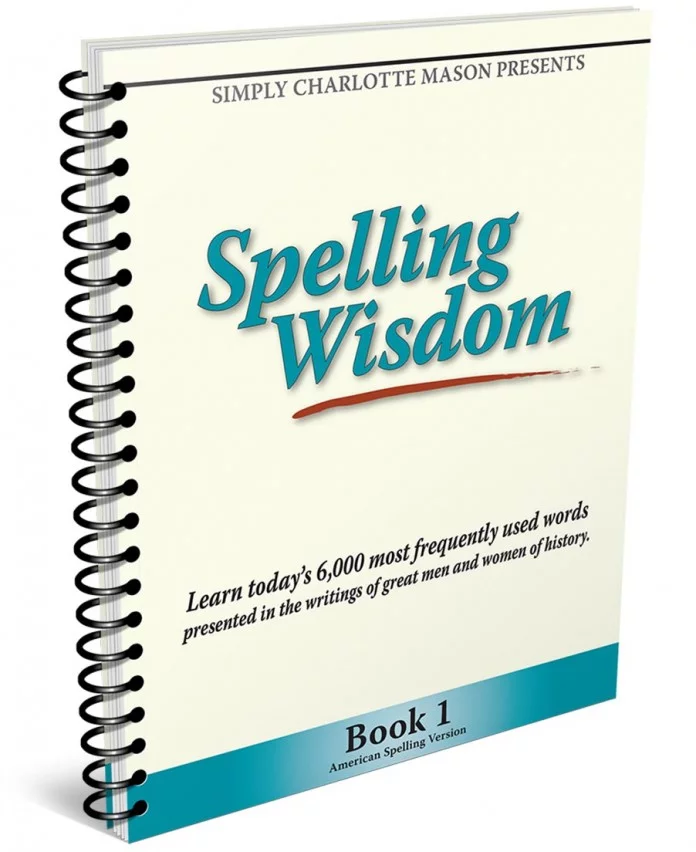
For spelling we have used Sequential Spelling in the past, and it helped my natural spellers catch on to the patterns; however, it did not help my non-natural speller at all.
I switched to studied dictation using Spelling Wisdom and then my own selections from Psalms and Proverbs and it has helped both natural and non-natural spellers improve spelling, attention, and handwriting in one 5 minute block a day.
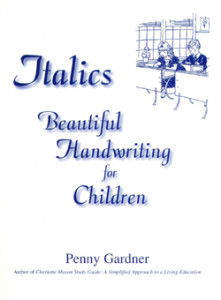
For handwriting I’ve used Italics: Beautiful Handwriting for Children by Penny Gardner. For $10 I’ve printed out handwriting pages for years for all 5 children. She even has YouTube videos of her teaching the pages, so you can have someone else say “Start at the top” a million and one times.
We’ve also used Typing Club for free typing practice starting in fifth or sixth grade.
The best way to learn history is through many books.
Book list coming soon.
Science in the elementary years must focus on cultivating interest and wonder.
Book list coming soon.

Latin is brain exercise, like math with language.
We used Latin for Children for many years with the DVD, but have made more progress while enjoying Latin more with Visual Latin and Picta Dicta from Roman Roads.
My good friend and neighbor-down-the-street hosts a twice-monthly book club for her two elementary students and my two. They read the same book, then gather to talk about the characters and setting and what their favorite part was and why.
This year they’ve also started using the questions from Teaching the Classics. Although I think the basic book club was a great thing, after the Read-Aloud Revival podcasts with Adam Andrews and with Heidi Scovel, we purchased the Teaching the Classics set, watched the videos, and my friend started trying it out with the kids.
My friend is the kid lit specialist and she picks all the books. Here’s what they read last year and what’s on the list for this year so far, for a book club with kids ages 8-11:
- Charlotte’s Web by E.B. White
- Call of the Wild by Jack London
- From the Mixed-up Files of Mrs. Basil E. Frankweiler by E.L. Konigsburg
- *The Borrows** by Mary Norton
- The Saturdays by Elizabeth Enright
- Babe the Gallant Pig by Dick King-Smith
- Mrs. Frisby and the Rats of NIMH by Robert C. O’Brien
- The Secret Garden by Frances Hodgson Burnett
- Where the Red Fern Grows by Wilson Rawls
- Caddie Woodlawn by Carol Ryrie Brink
- Hans Brinker or The Silver Skates by Mary Mapes Dodge
- Carry On, Mr. Bowditch by Jean Lee Latham
- Along Came a Dog by Meindert DeJong
- Wheel on the School by Meindert DeJong
- The Twenty-One Balloons by William Pene du Bois
- Castle in the Attic by Elizabeth Winthrop
- Sarah, Plain and Tall by Patricia MacLachlan
- Eagle of the Ninth by Rosemary Sutcliff
- Thimble Summer by Elizabeth Enright
- The Wonderful O by James Thurber
- The 13 Clocks By James Thurber
- Hitty Her First Hundred Years by Rachel Field
- David and the Phoenix by David Ormondroyd
- Miss Hickory by Carolyn Sherwin Bailey
- Howl’s Moving Castle by Diana Wynne Jones
- All-of-a-Kind Family by Sydney Taylor
- Fog Magic by Julia L. Sauer
- Across Five Aprils by Irene Hunt
- The Winged Watchman by Hilda Van Stockum
- Number the Stars by Lois Lowry
- The Little Prince by Antoine de Saint-Exupery
- My Side of the Mountain by Jean Craighead George
These books make great read-alouds, literature selections, or free reading choices.
You know I love audio books, so I couldn’t drop the subject without one more list of them.
- Narnia. You’re never too old for Narnia.
- Tom Sawyer. Southern dialect is a good thing to outsource.
- Huck Finn. Get the one done by Elijah Wood!
- Pilgrim’s Progress. The archaic language makes this one a good choice for audio done by a good reader.
- The Hobbit. Get Rob Ingil’s version, not the dramatized one.
- The Lord of the Rings Trilogy. You can’t skip the songs if you’re listening to the audio book!
- Ivanhoe. The old dialects make this a good one to delegate, but the story is basic and action-packed.
- Story of the World.
- Johnny Tremain
- The Black Arrow
Audio books are great for sick days, for Lego-playing afternoons, and for car trips. With an audio book, an older student can experience a book that might be difficult for him to read on his own, yet is certainly able to enjoy the story itself (like Ivanhoe). With an audio book, they can “read” while keeping their hands busy.
Here are the series I’ve collected or returned to at the library to keep my elementary student readers in books.
Start with
- Hardy Boys by Franklin Dixon (library books tolerated for occasional free reading at our house)
- Encyclopedia Brown by Donald Sobol
- The Great Brain by John Fitzgerald
- Hank the Cowdog by John Erickson
- Trumpet of the Swan and others by E.B White
- The Borrowers by Norton
- Doctor Doolittle by Hugh Lofting
- Sugar Creek Gang by Hutchens (too goody-goody for my taste, but we have about 8 of them)
- Secret Garden and others by Frances Hodges Burnett
When they’re older and need more, turn to
- Redwall books by Brian Jacques
- 100 Cupboards series by N.D. Wilson (intense)
- Boys of Blur & Leepike Ridge by N.D. Wilson (not series)
- The Archives of Anthropos by John White
- Freddy books by Walter Brooks (very funny)
- The Graveyard Book by Neil Gaimen (I like Gaimen, but his books are seriously faerie-tale spooky – definitely pre-read to decide if they’re ok for your family)
- Charlatan’s Boy By Jonathan Rogers
- Into the Twilight, Endlessly Grousing by Patrick McManus (not written for children, but still humorous to them)
- Kidnapped and others by Robert Louis Stevenson
- Robin Hood and others by Howard Pyle
Plus we have a shelf full of Eyewitness Books that the boys love to page through and browse and copy pictures out of.
I’m just glad my boys have formed no prejudice about reading the same books over and over again! Remember and teach your children: real readers reread.
Geography can be low-key and integrated into history and science.
Book list coming soon.
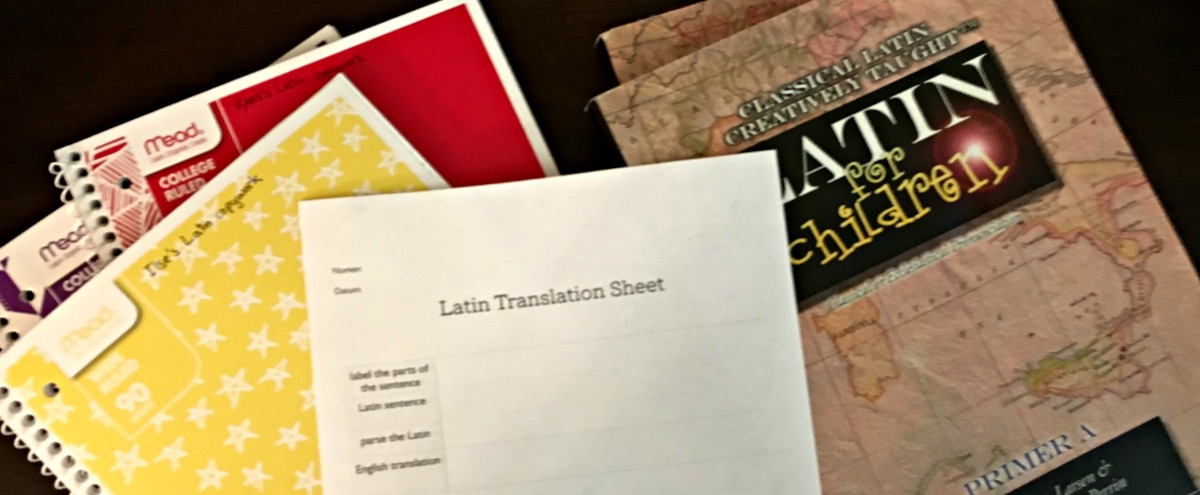
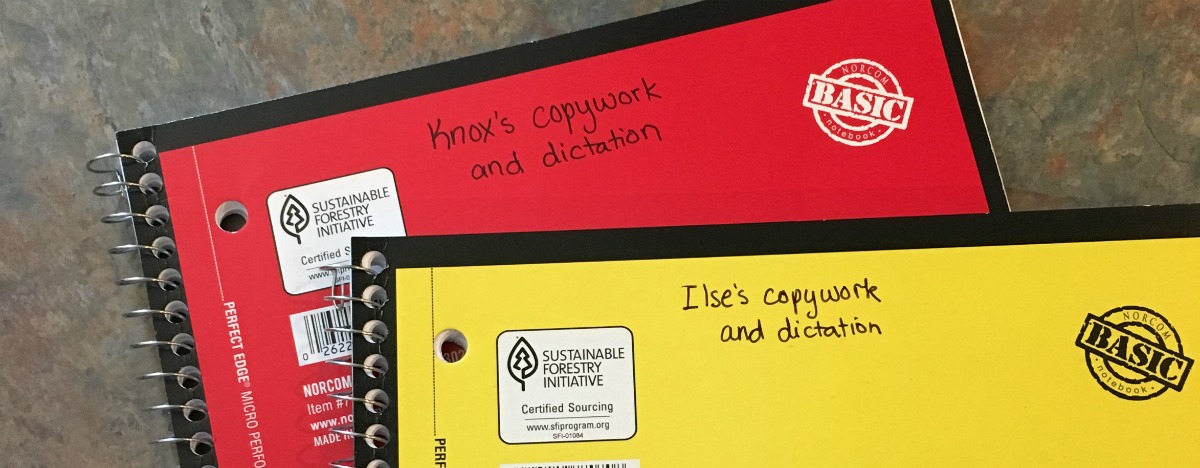
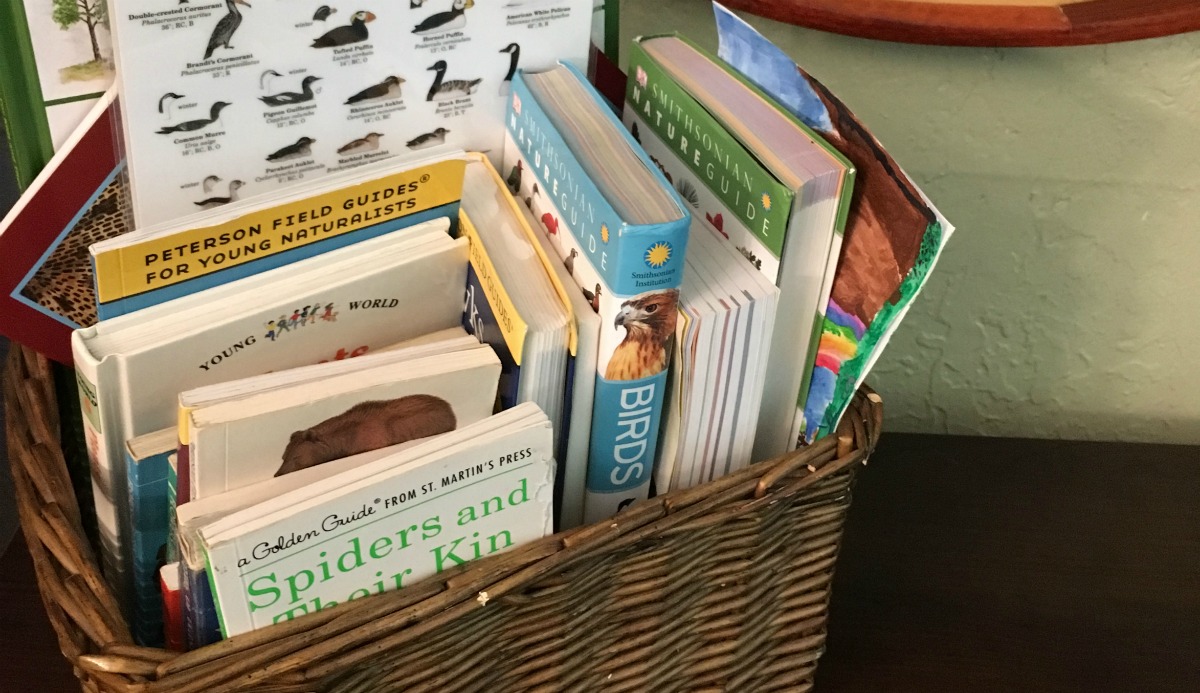
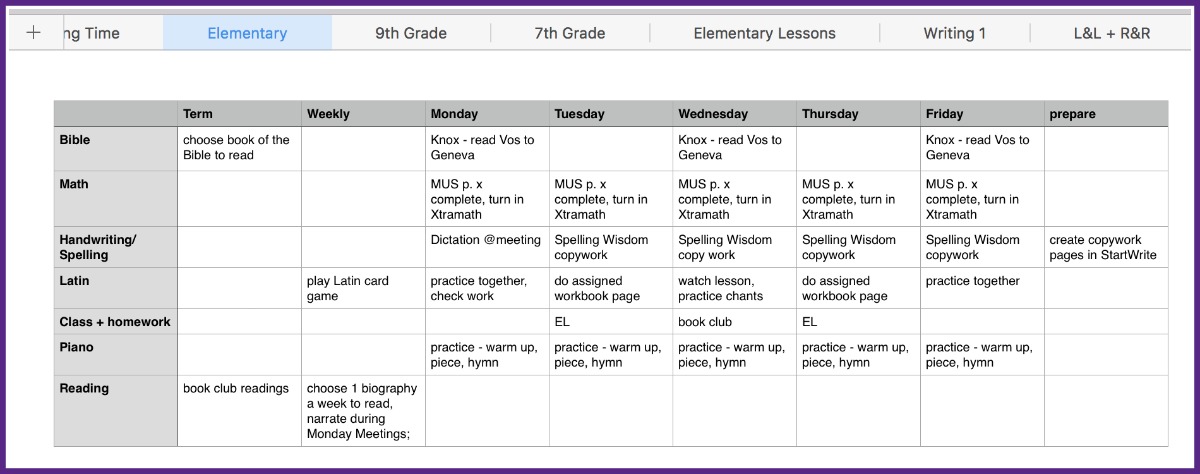

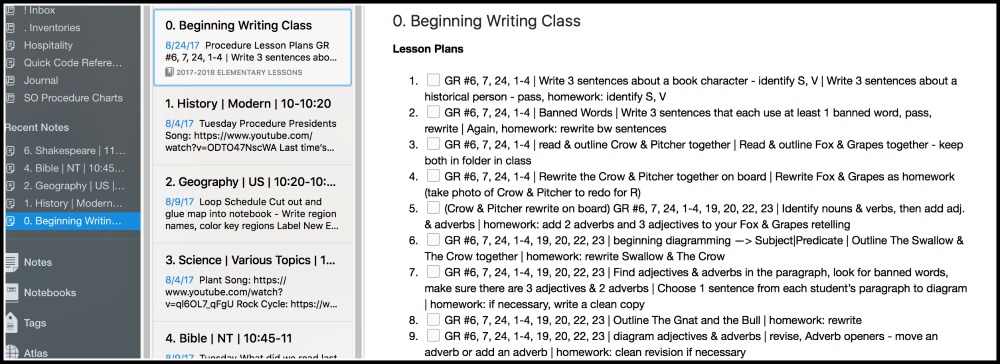
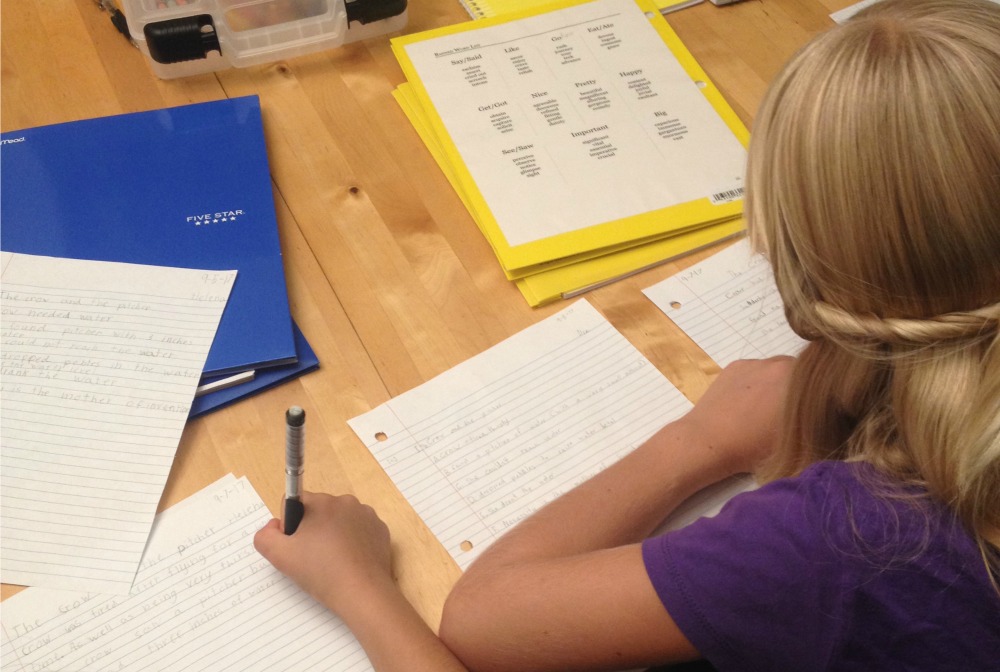
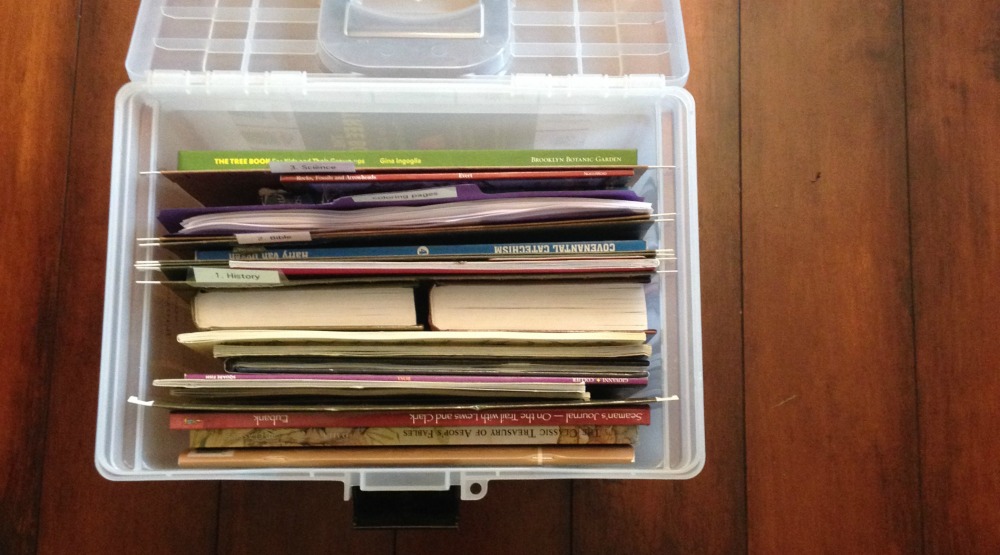
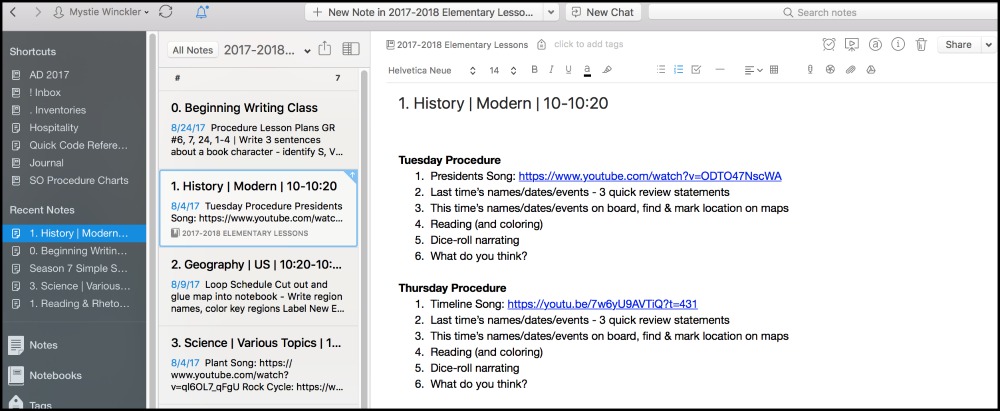
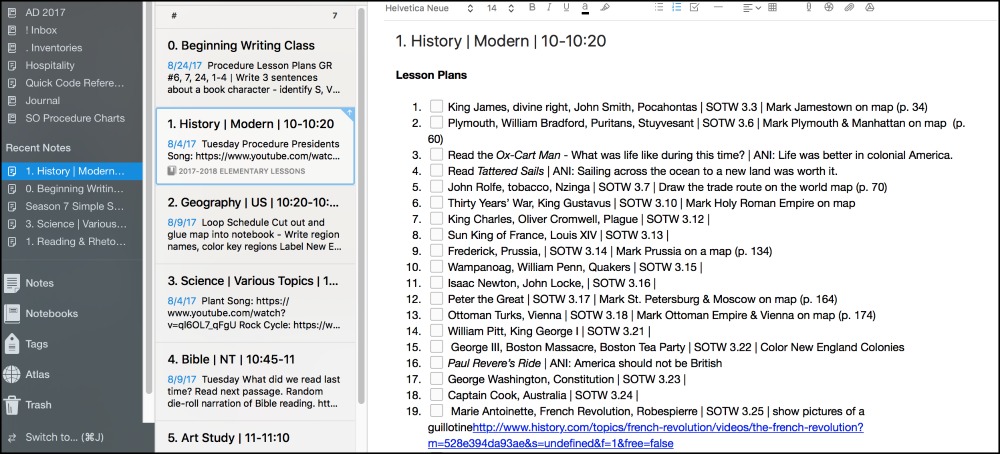
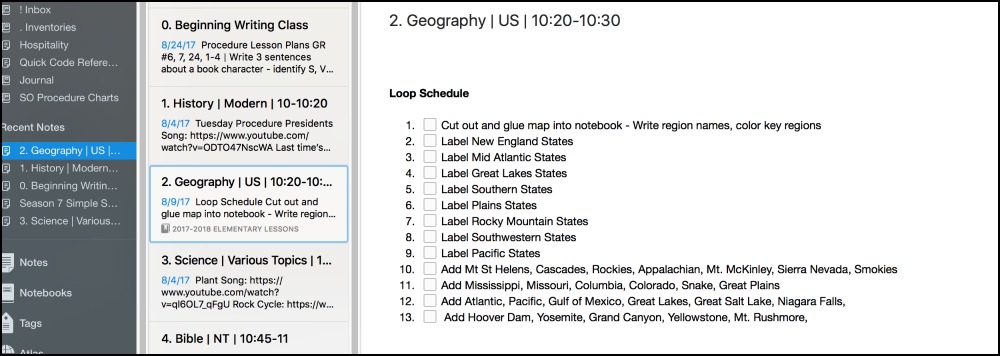
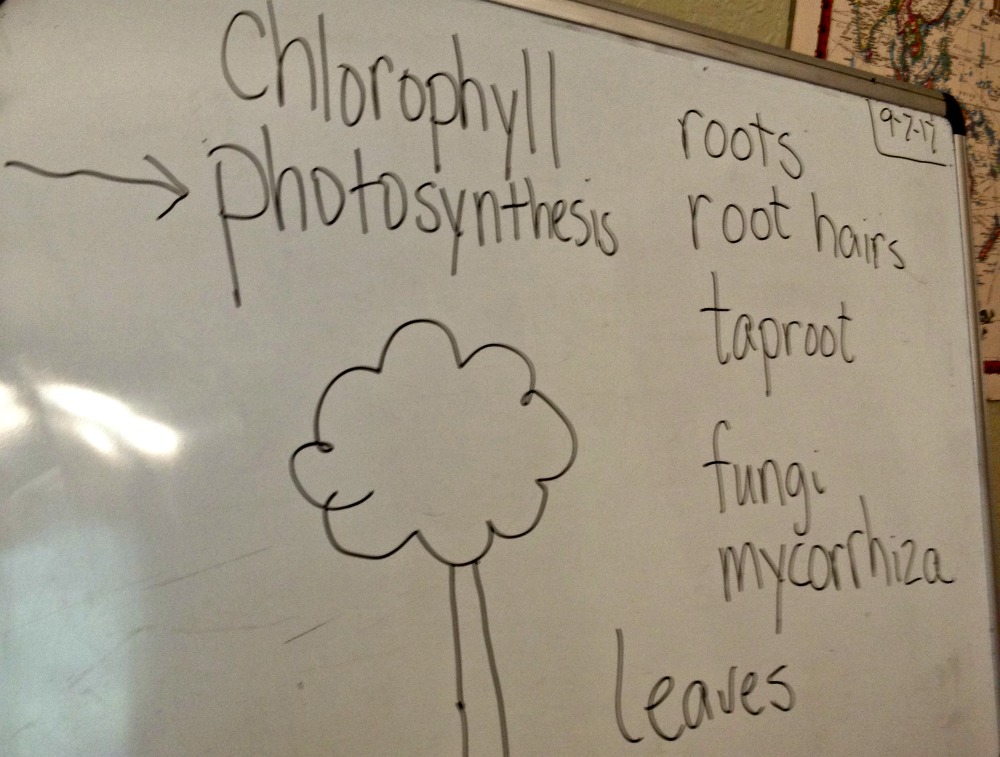
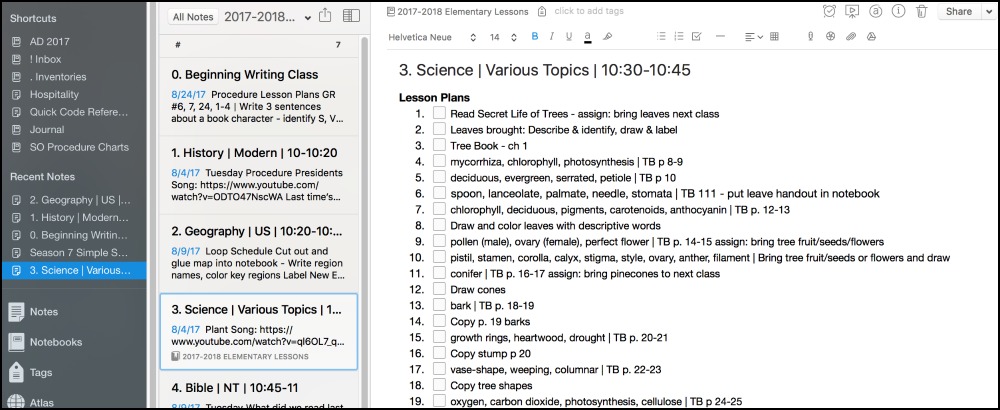
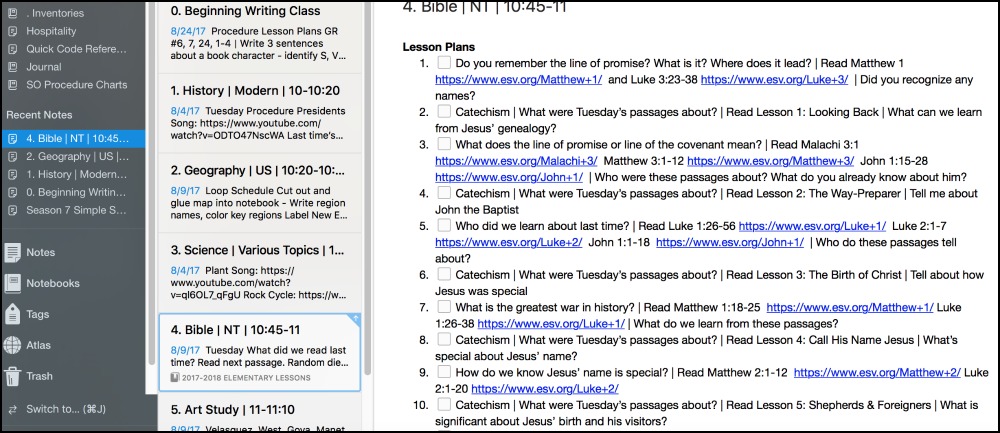
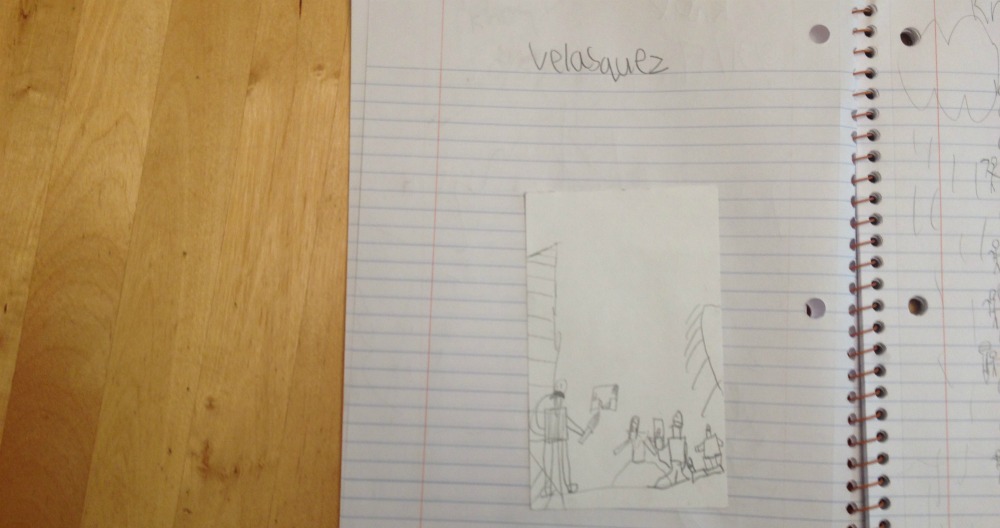
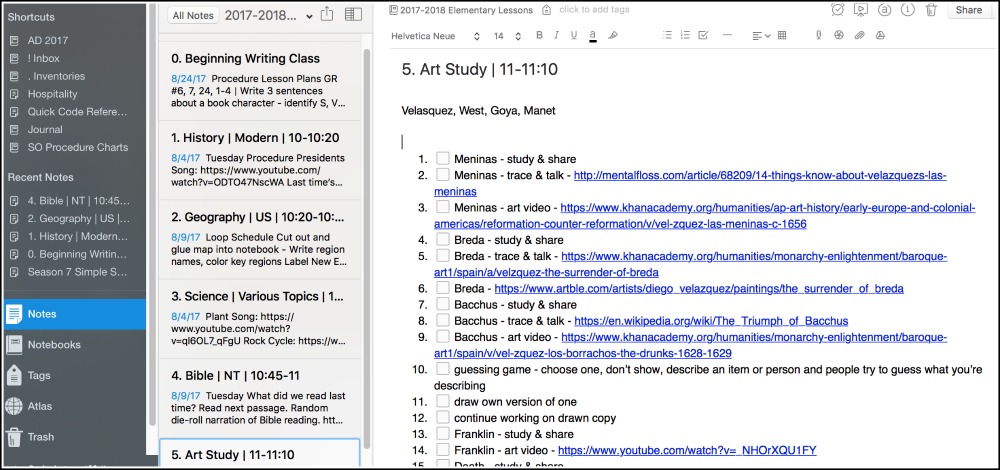
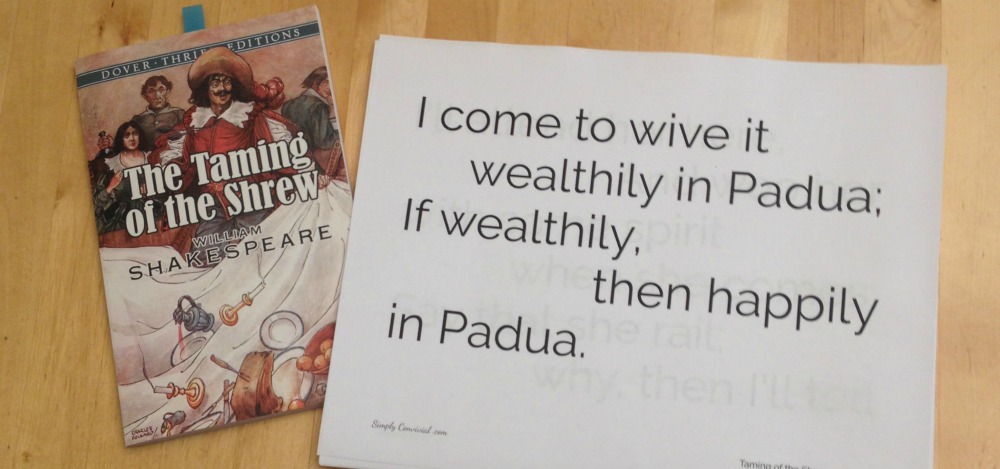
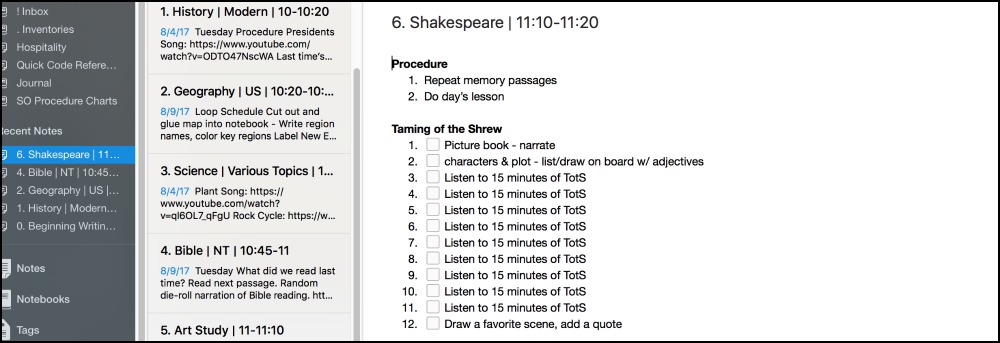


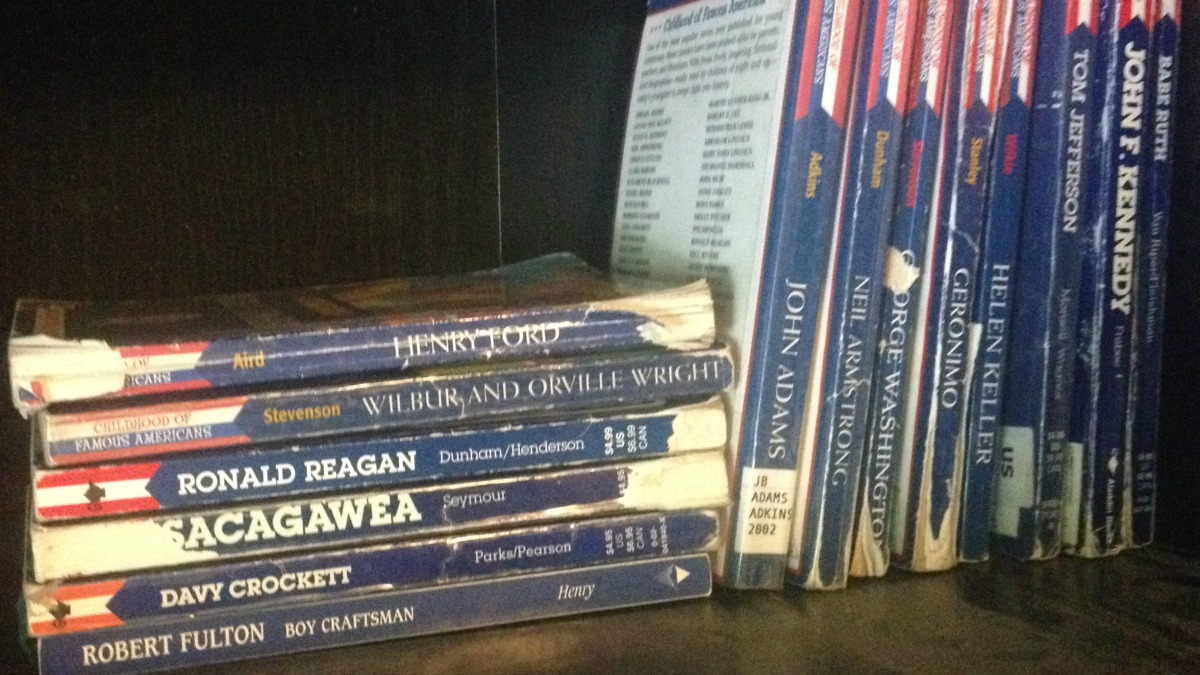



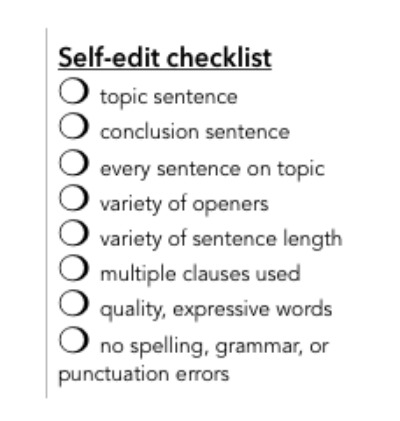
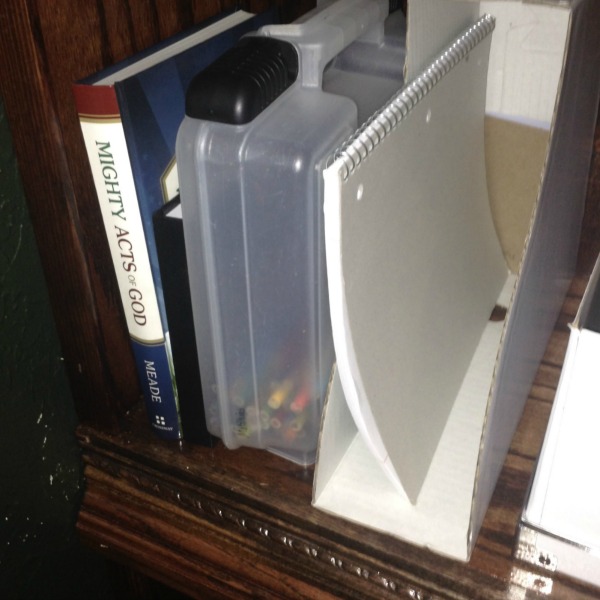
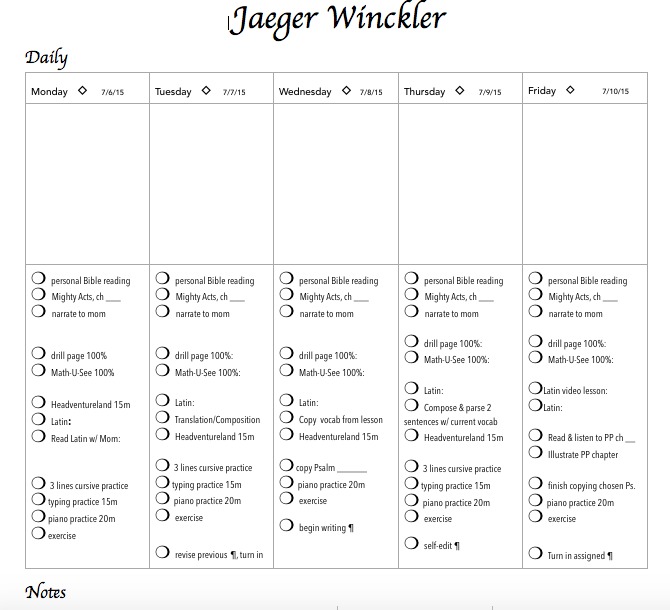
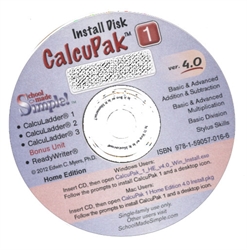

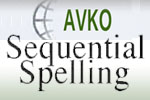

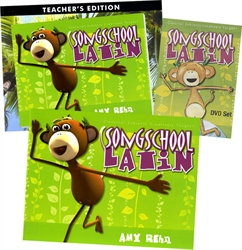
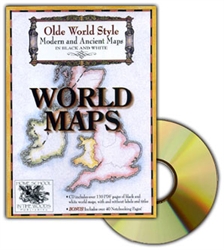

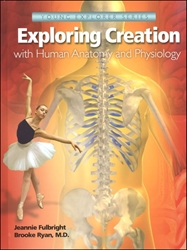

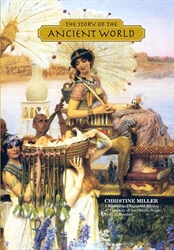
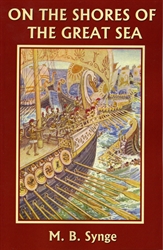




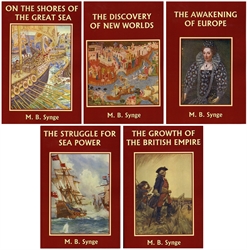
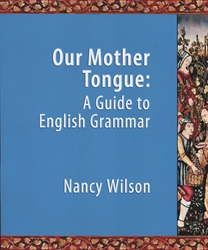




Your website has been a wealth of knowledge and an answer to prayer.! I currently learning how to do this and looking into resources but I can not get any of your tabs for example what you’ve done over the years or subjects to open nothing appears on them????? Just wondering why? Is there another place to look? Thank you for site and your wealth of wisdom